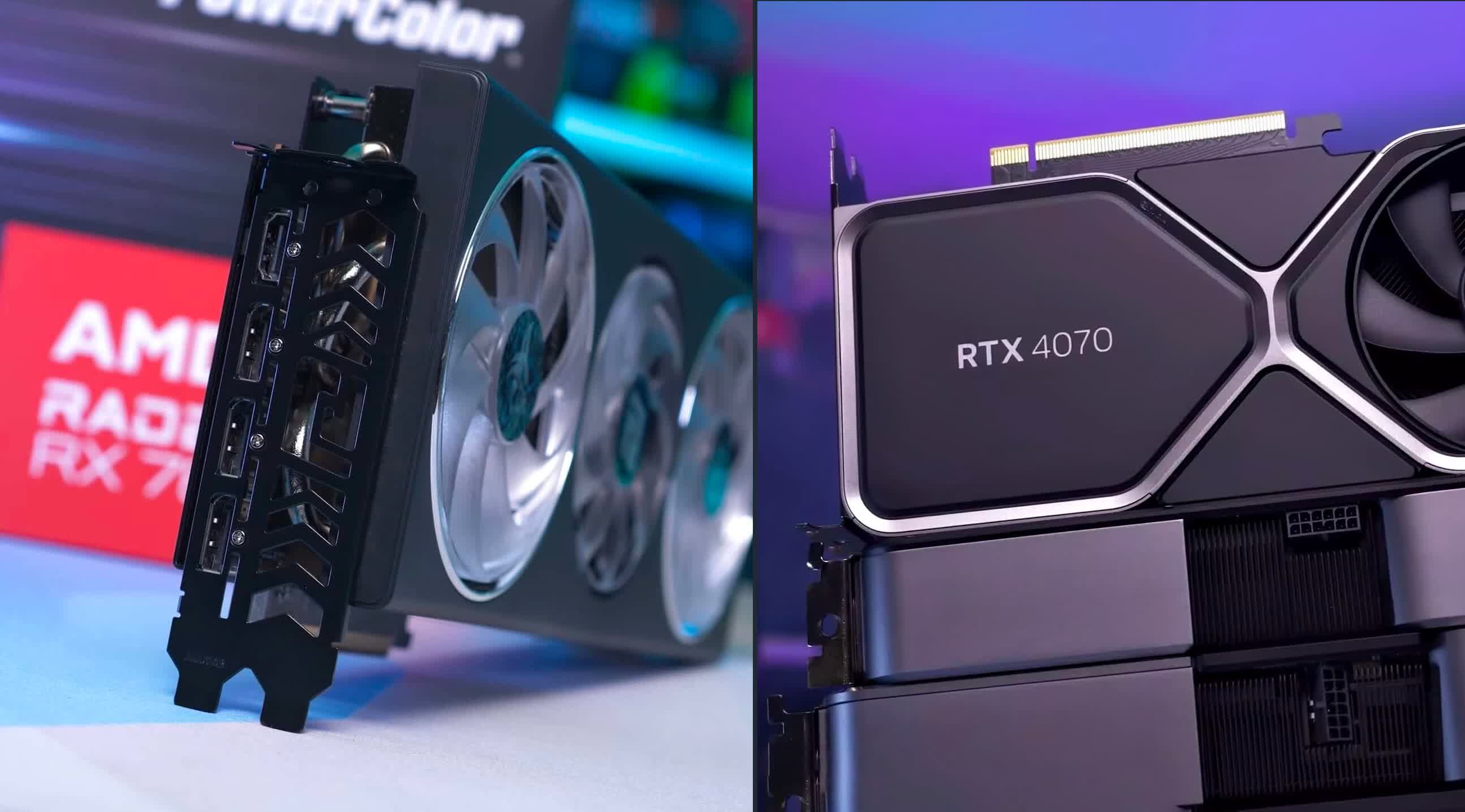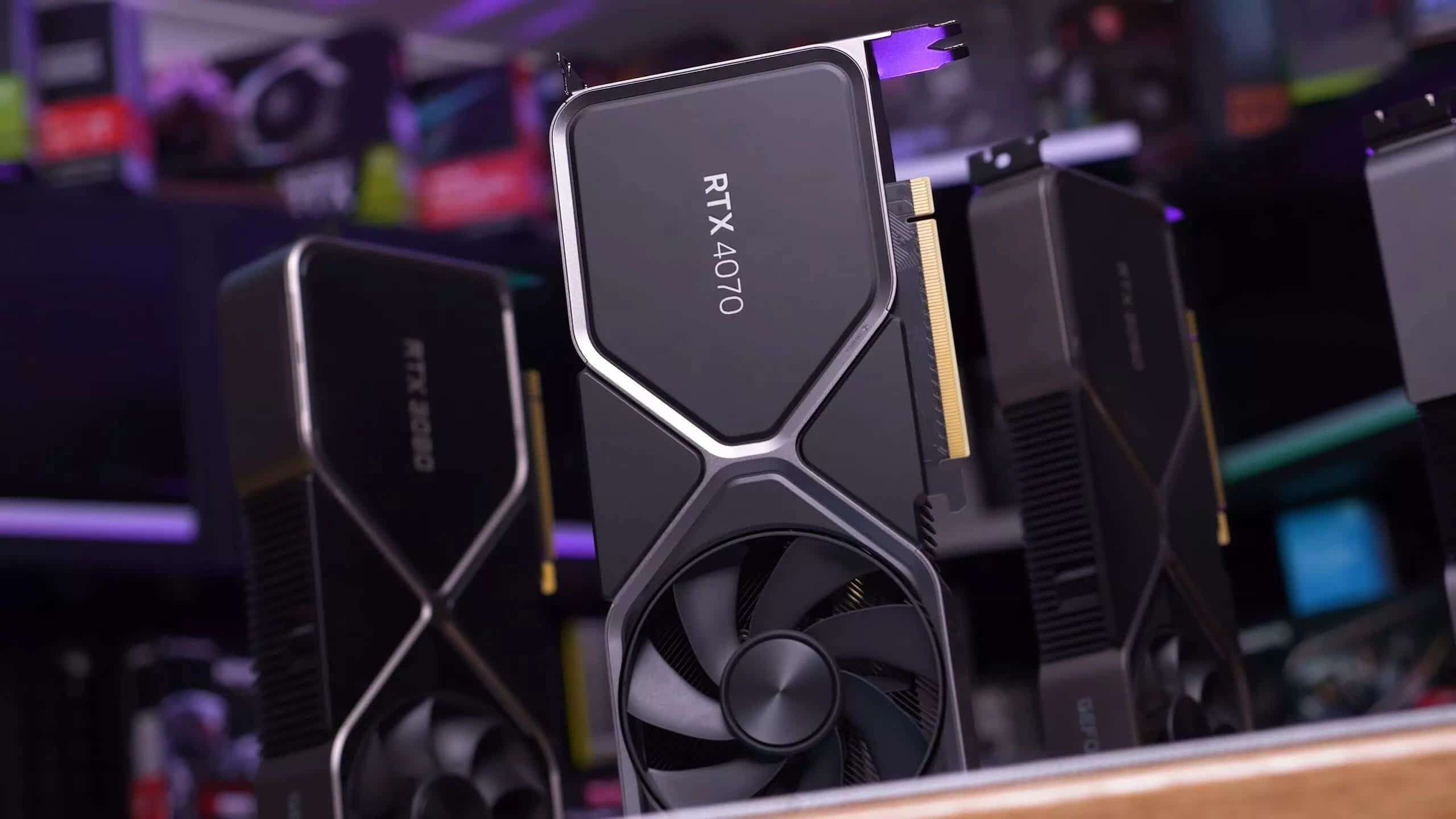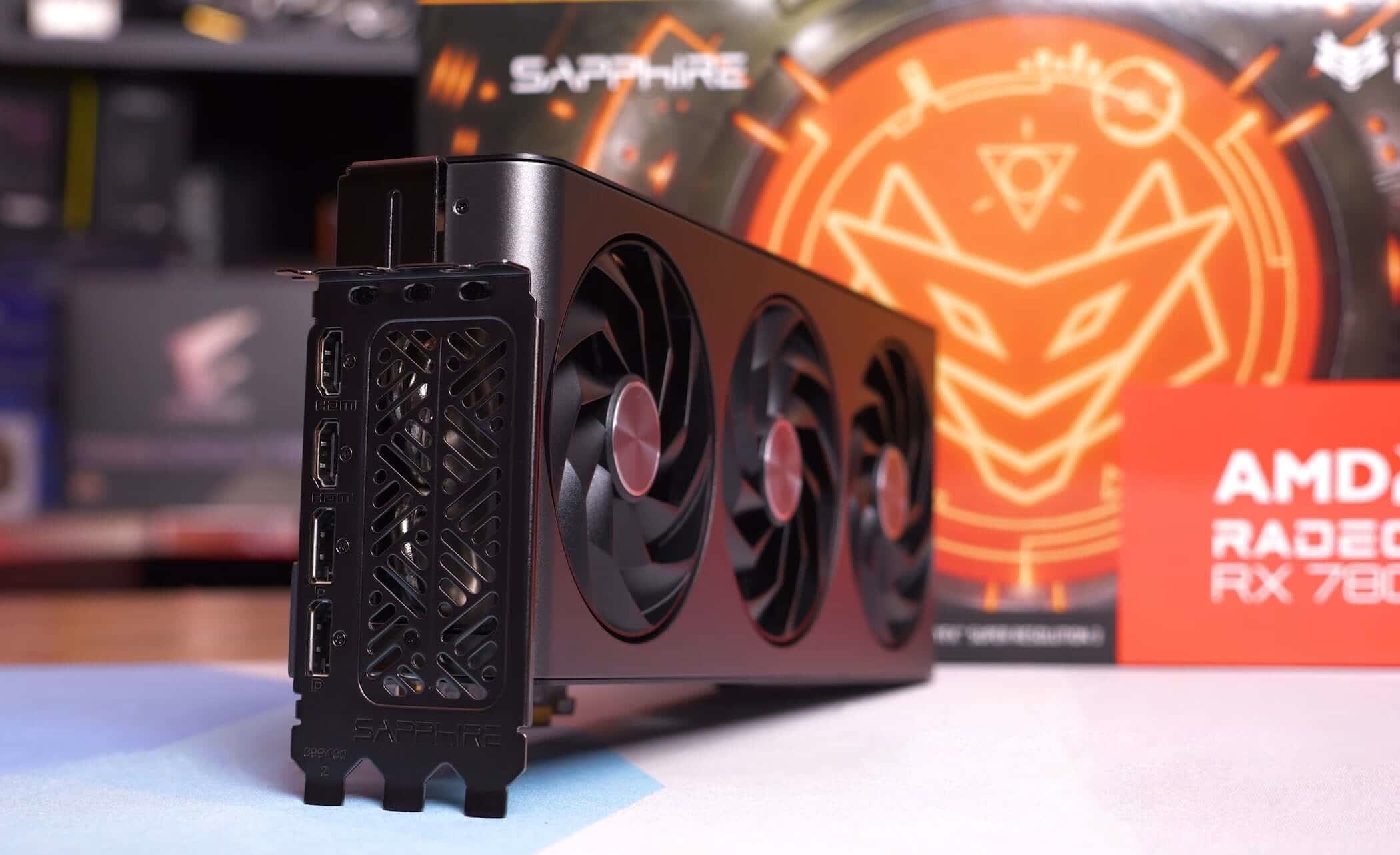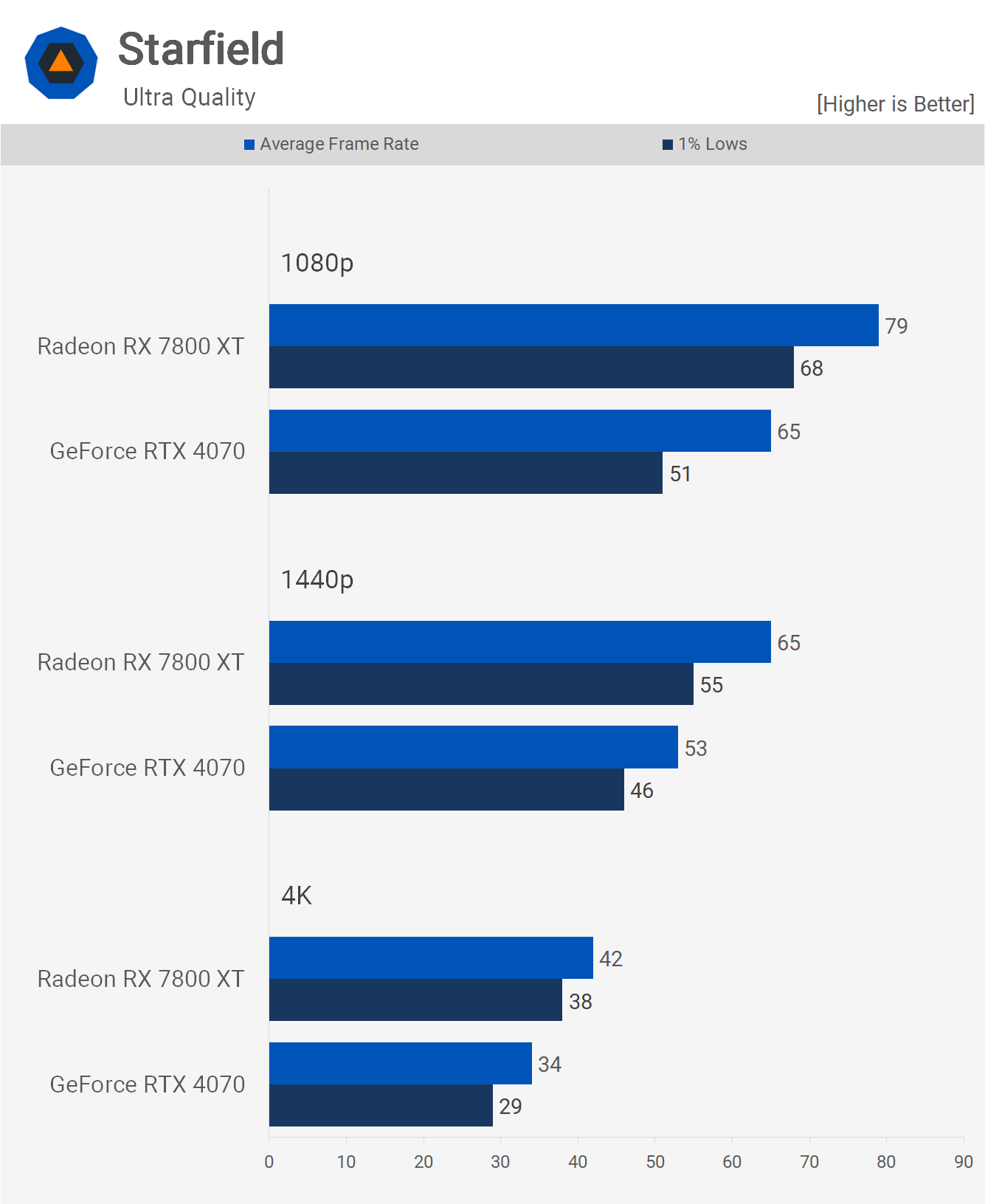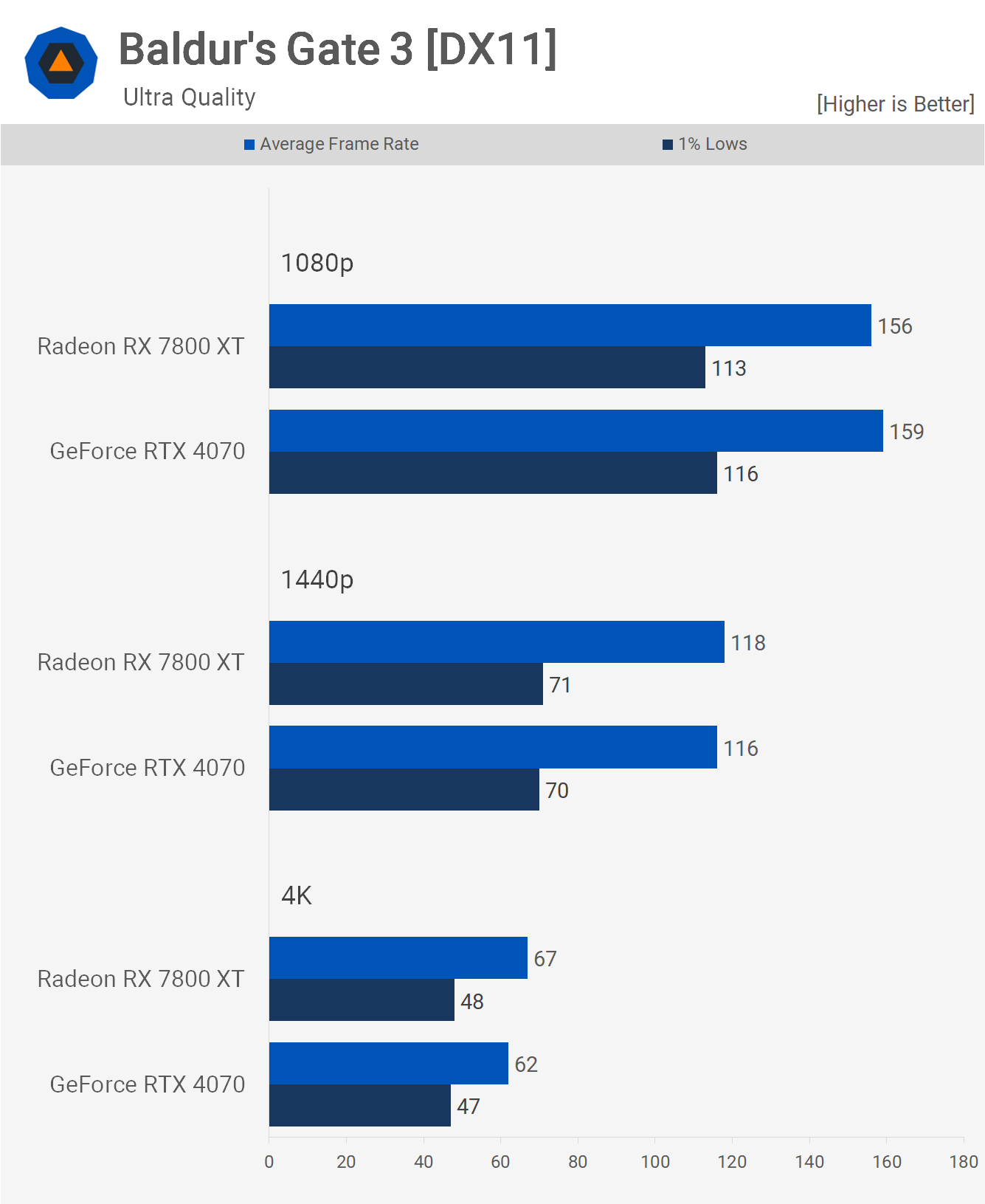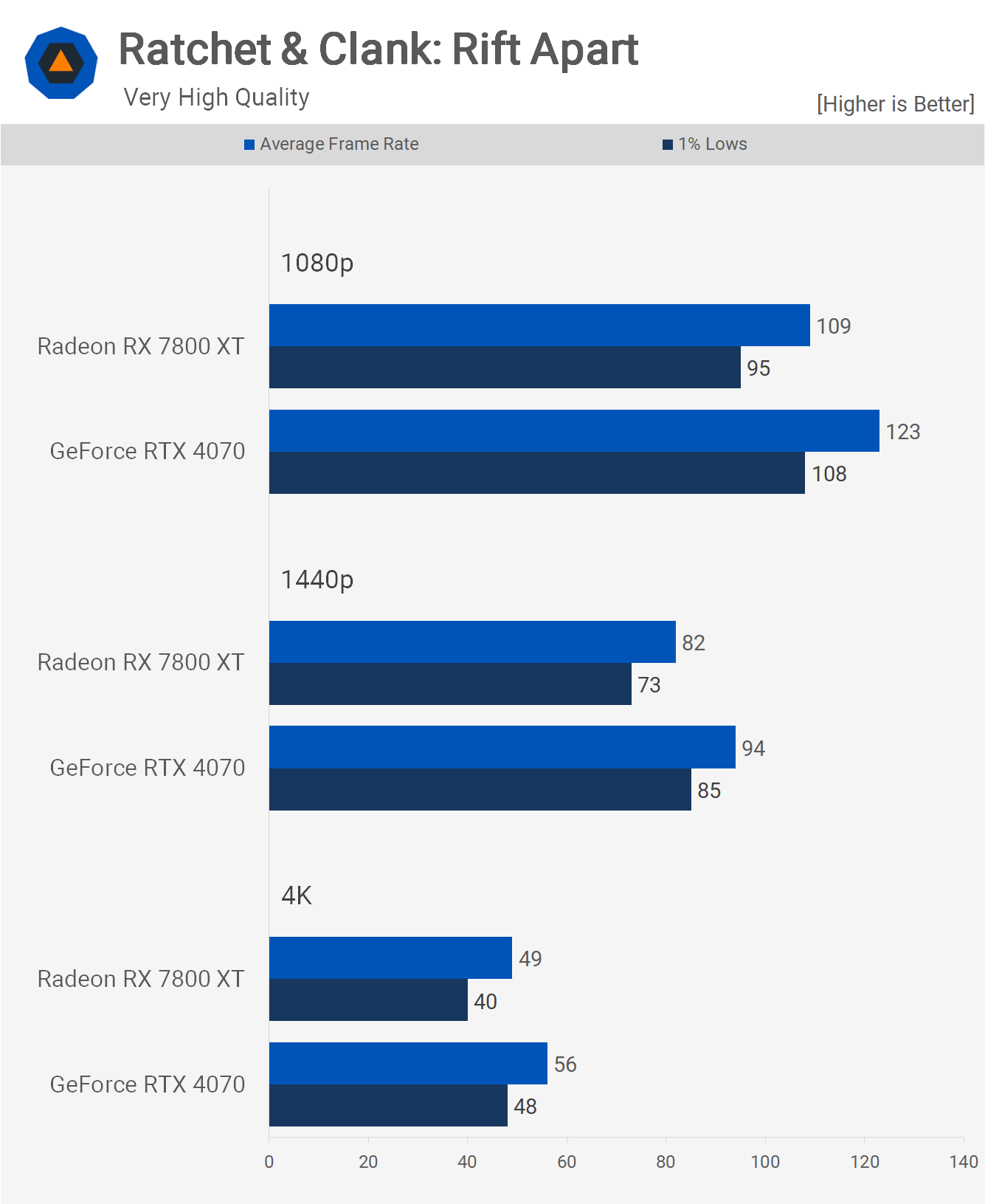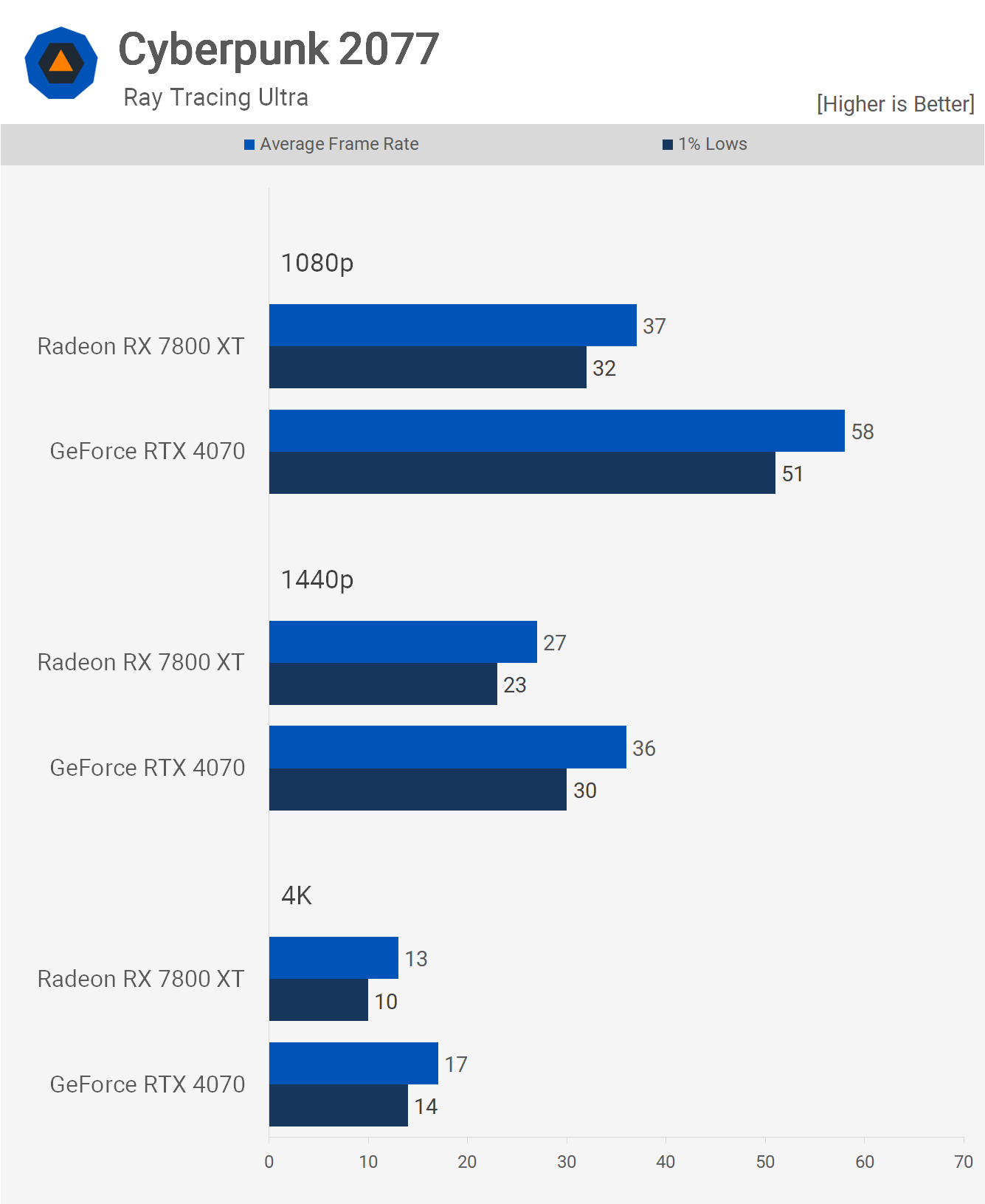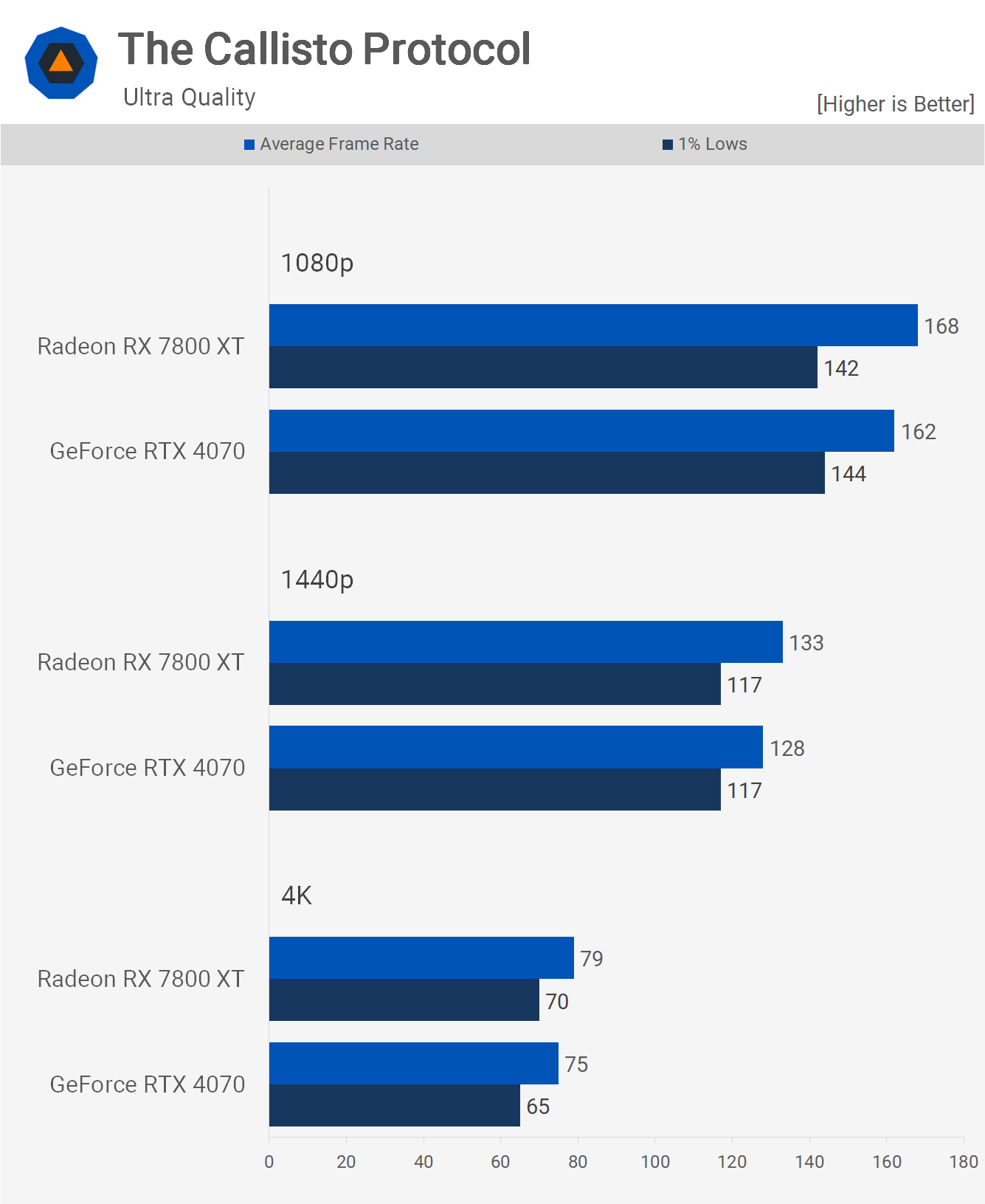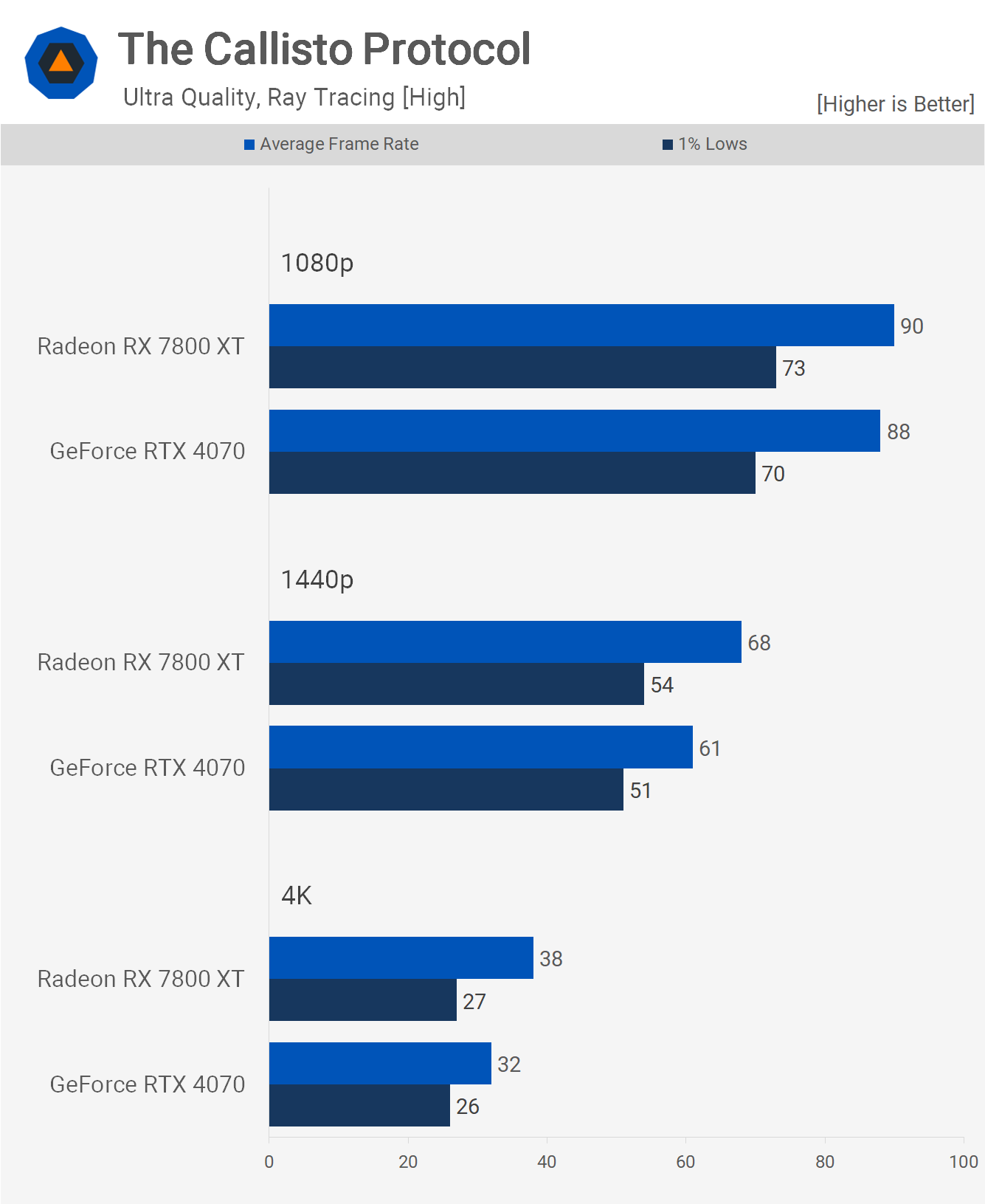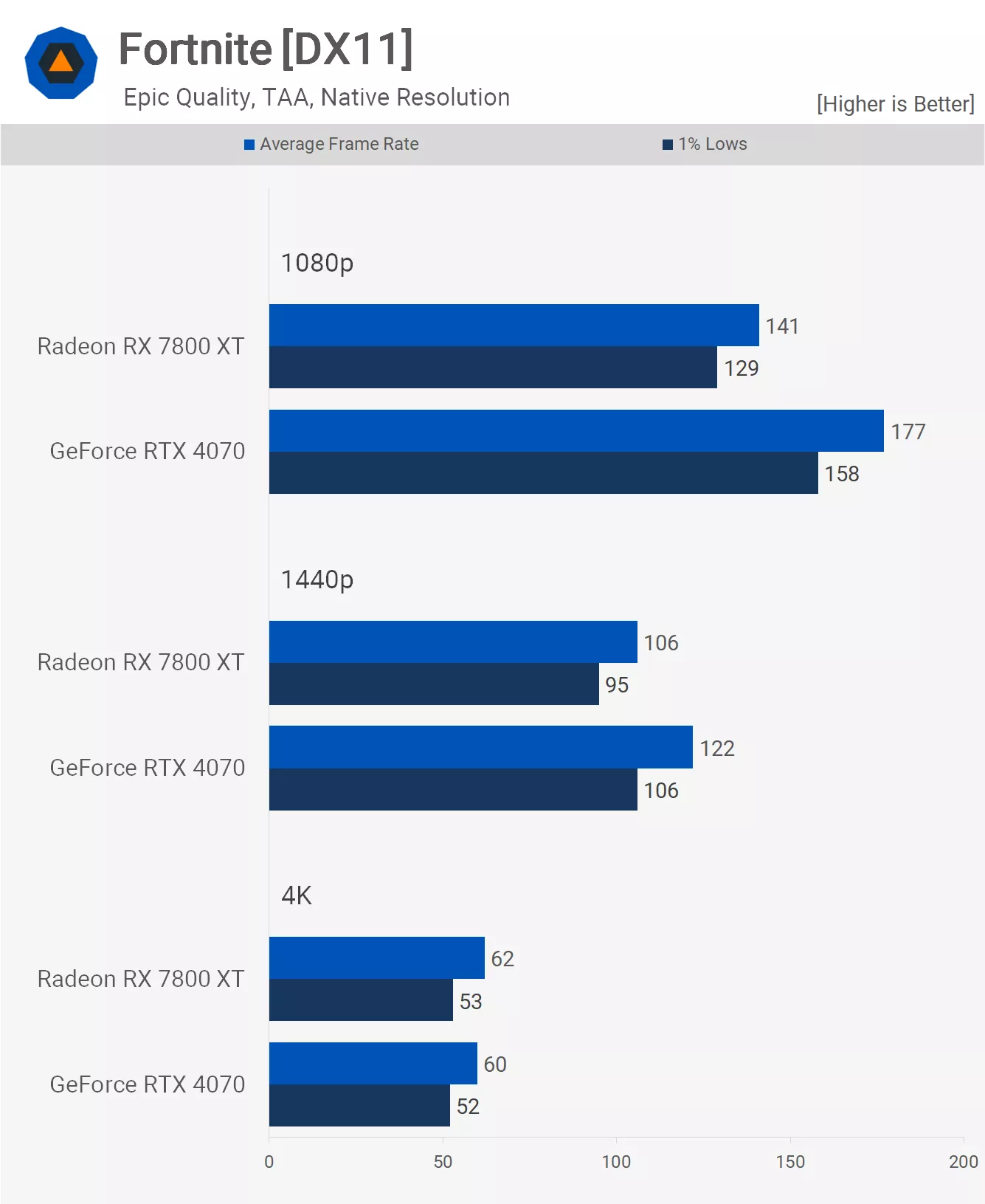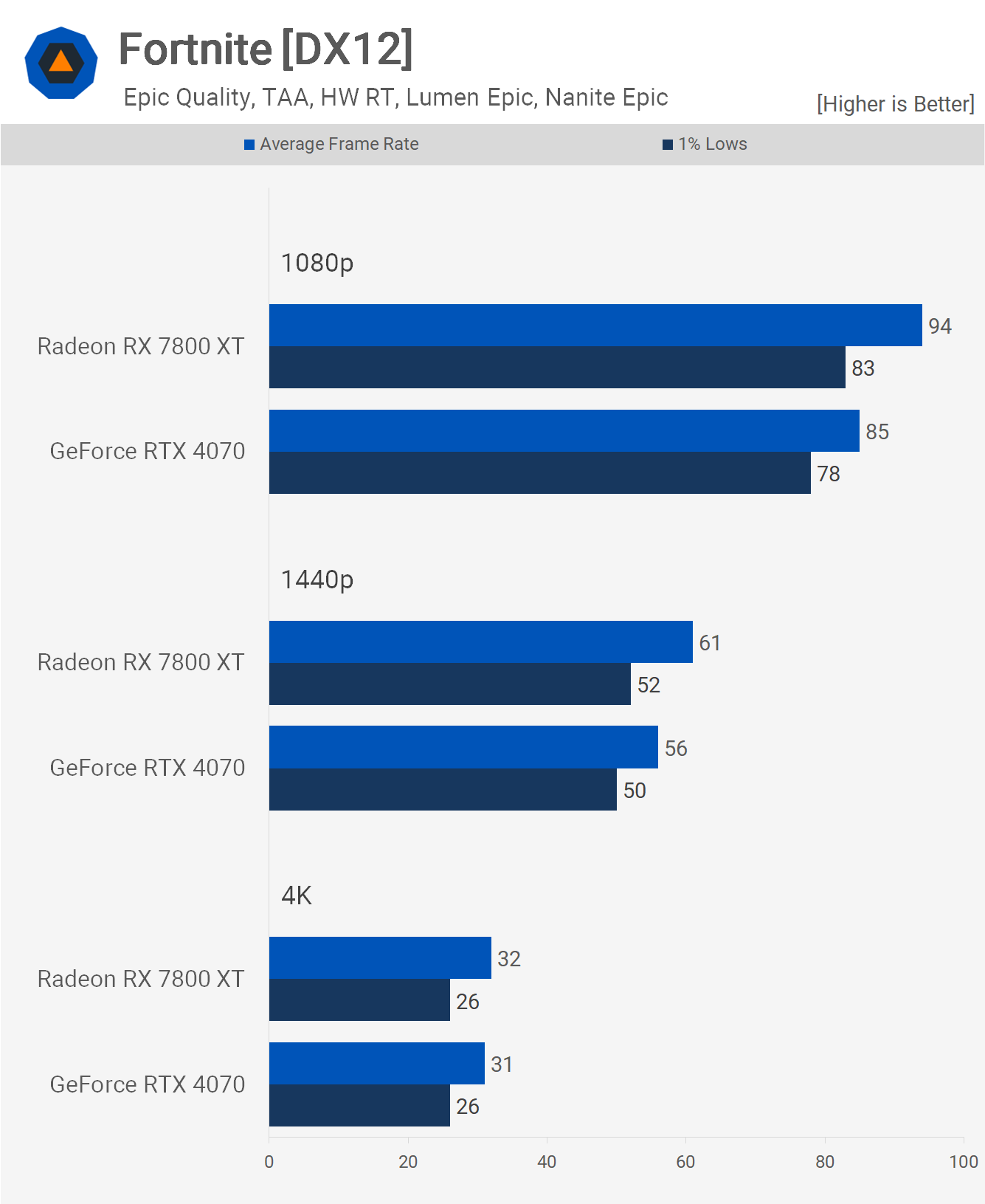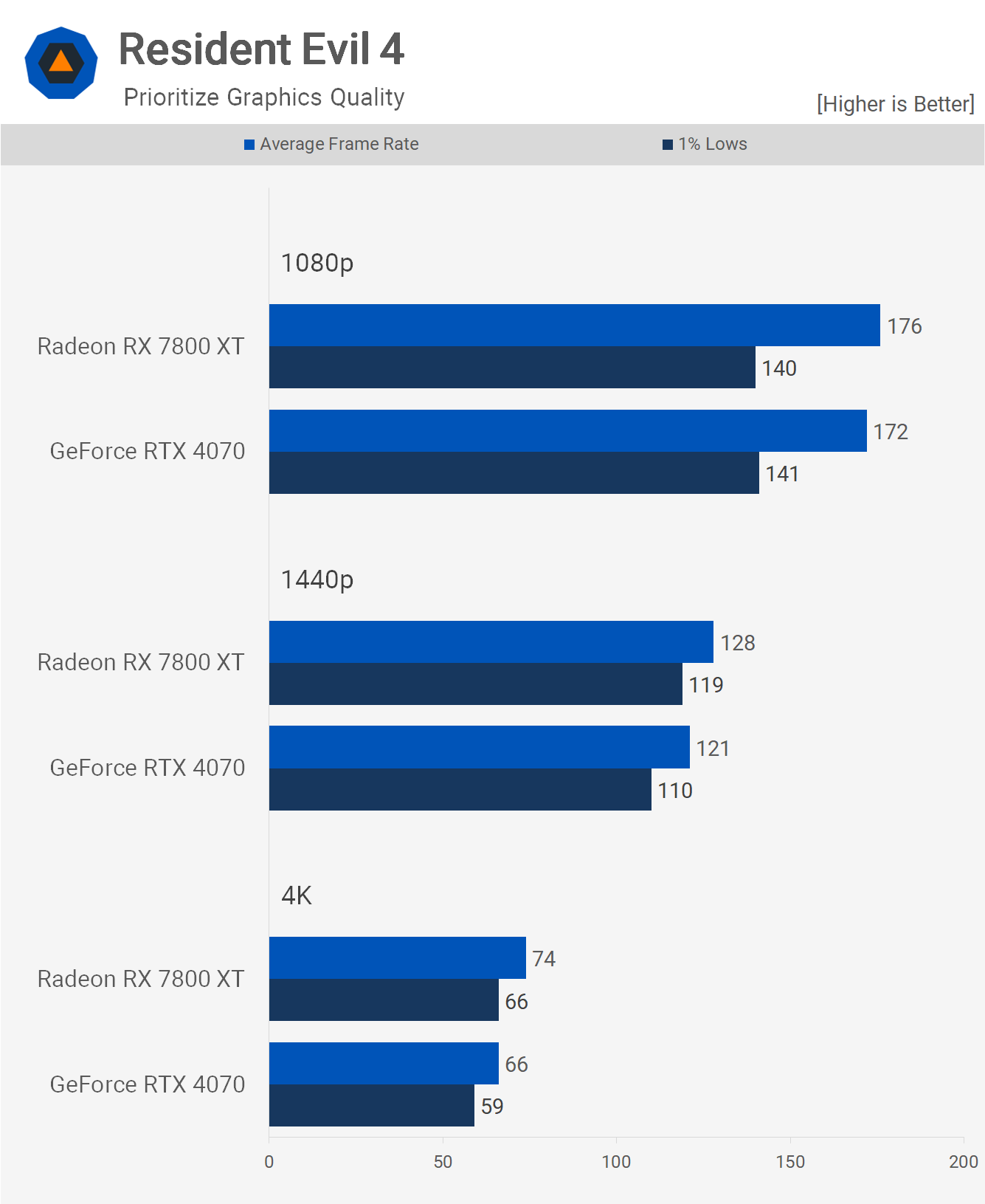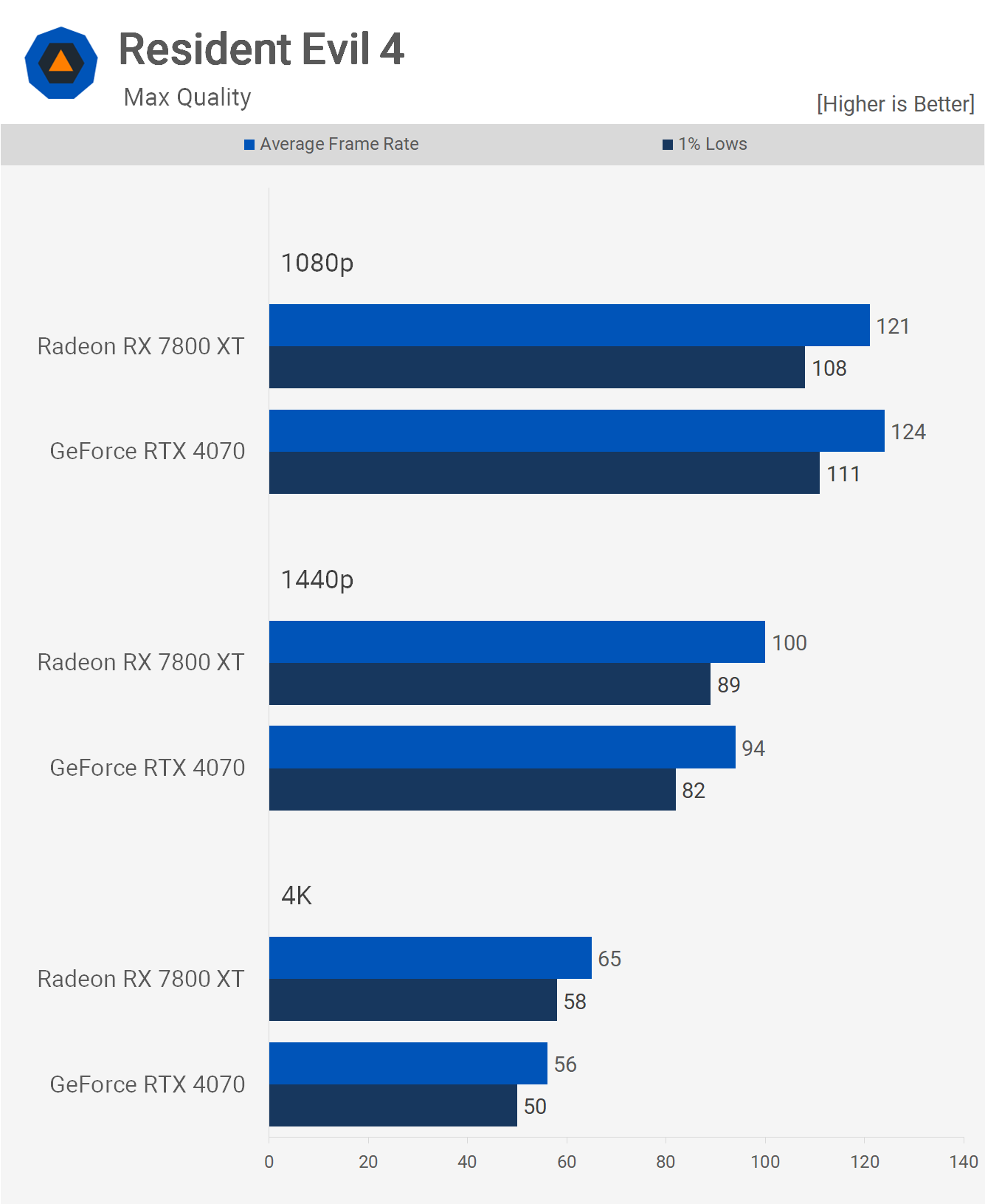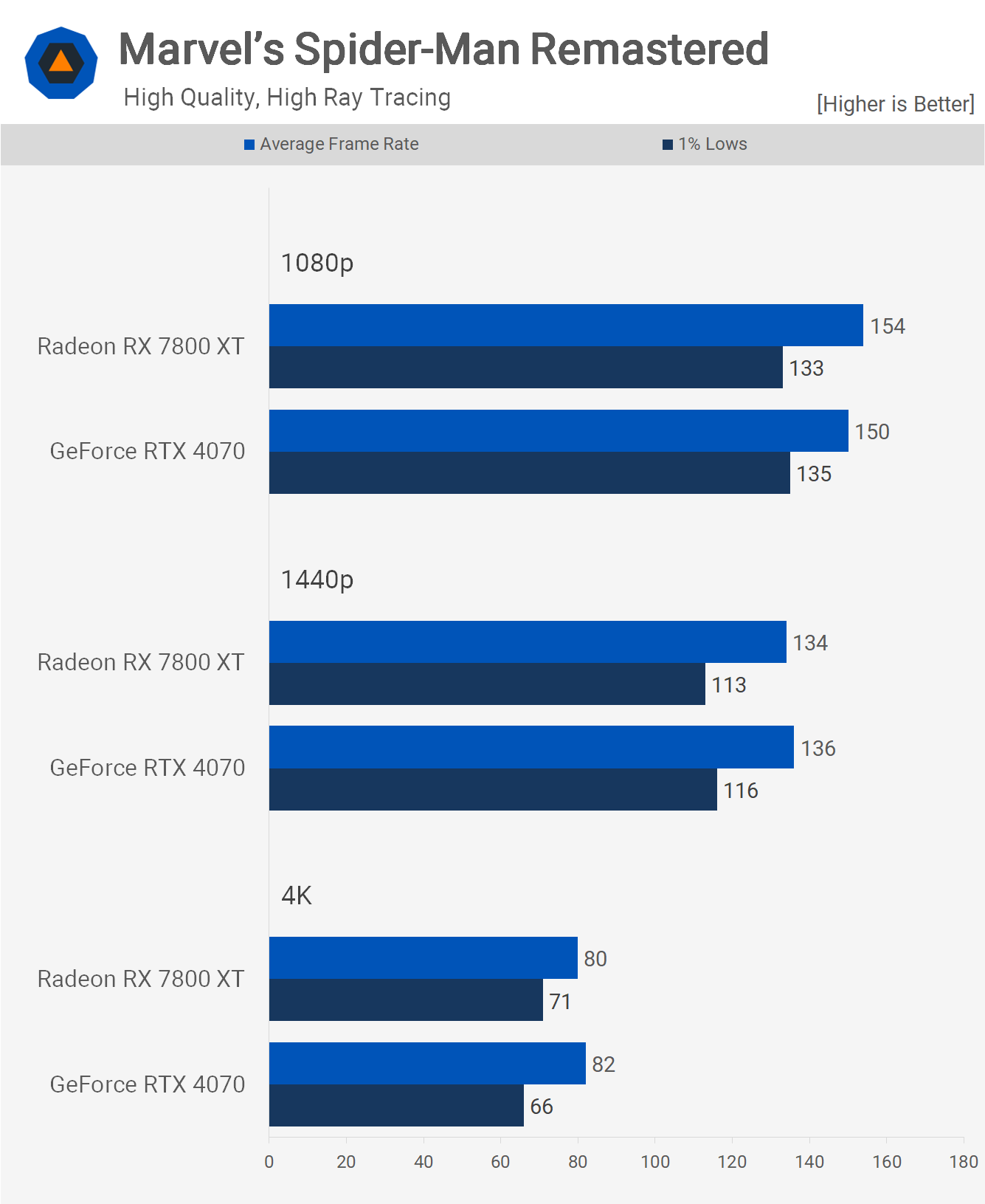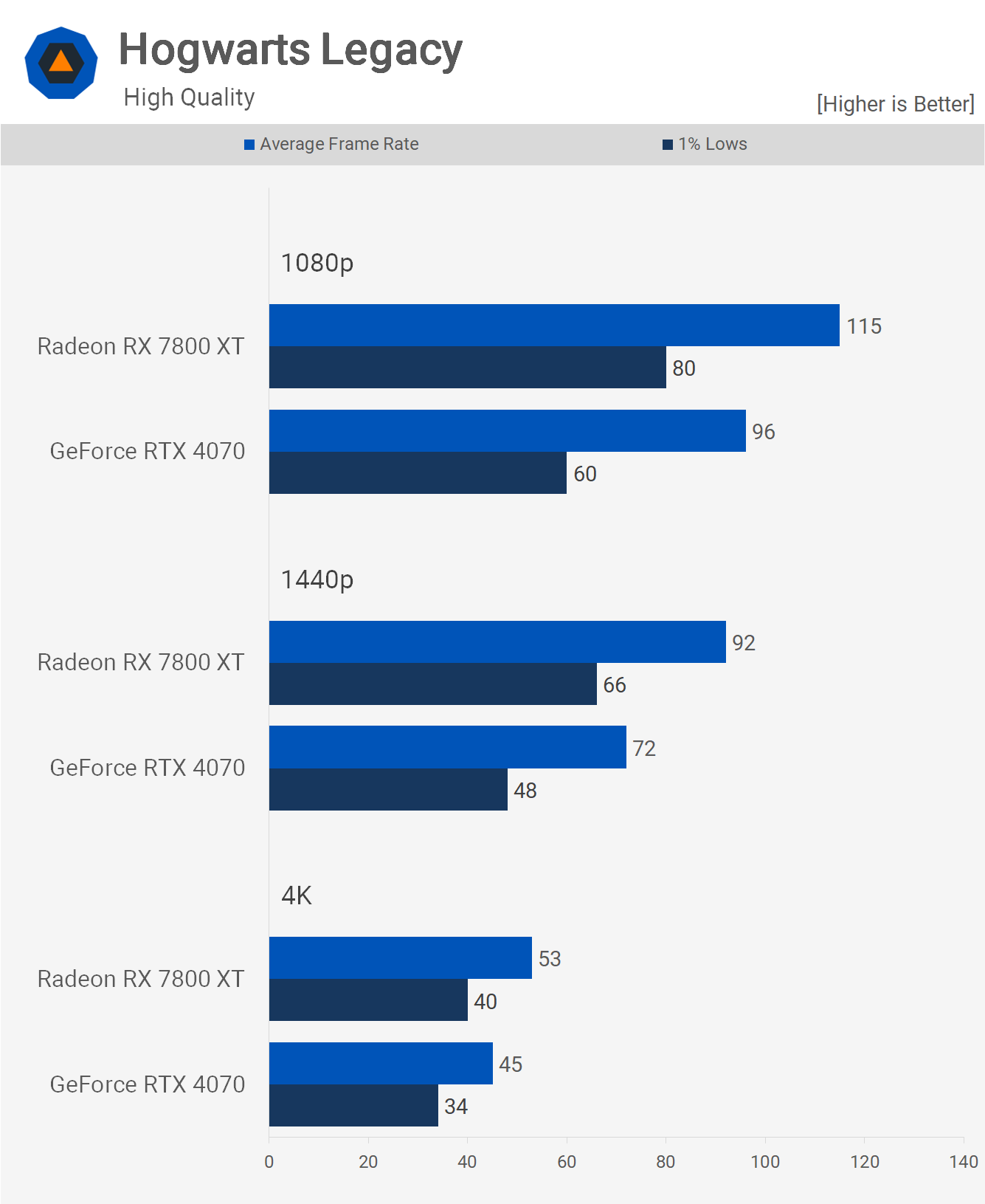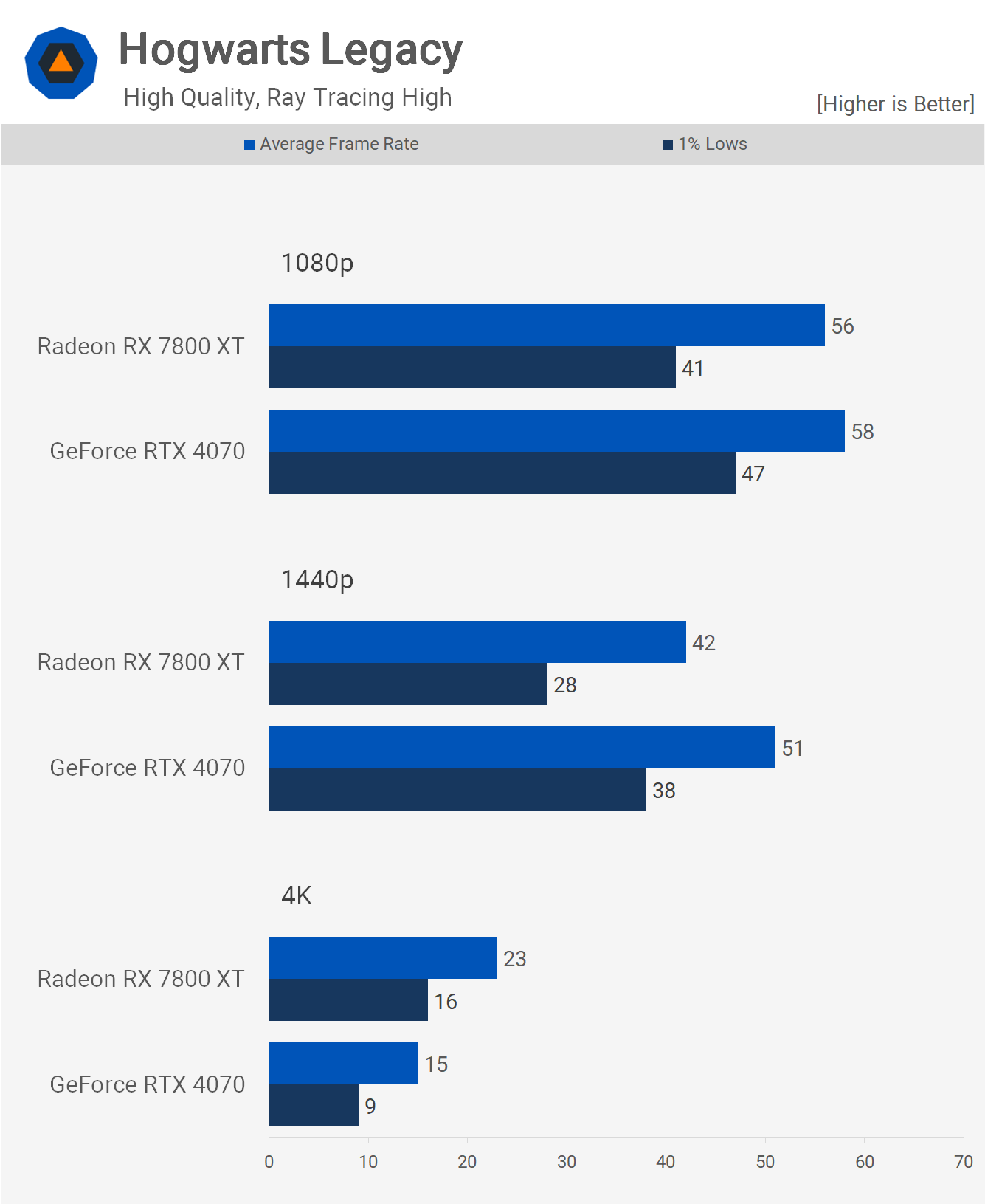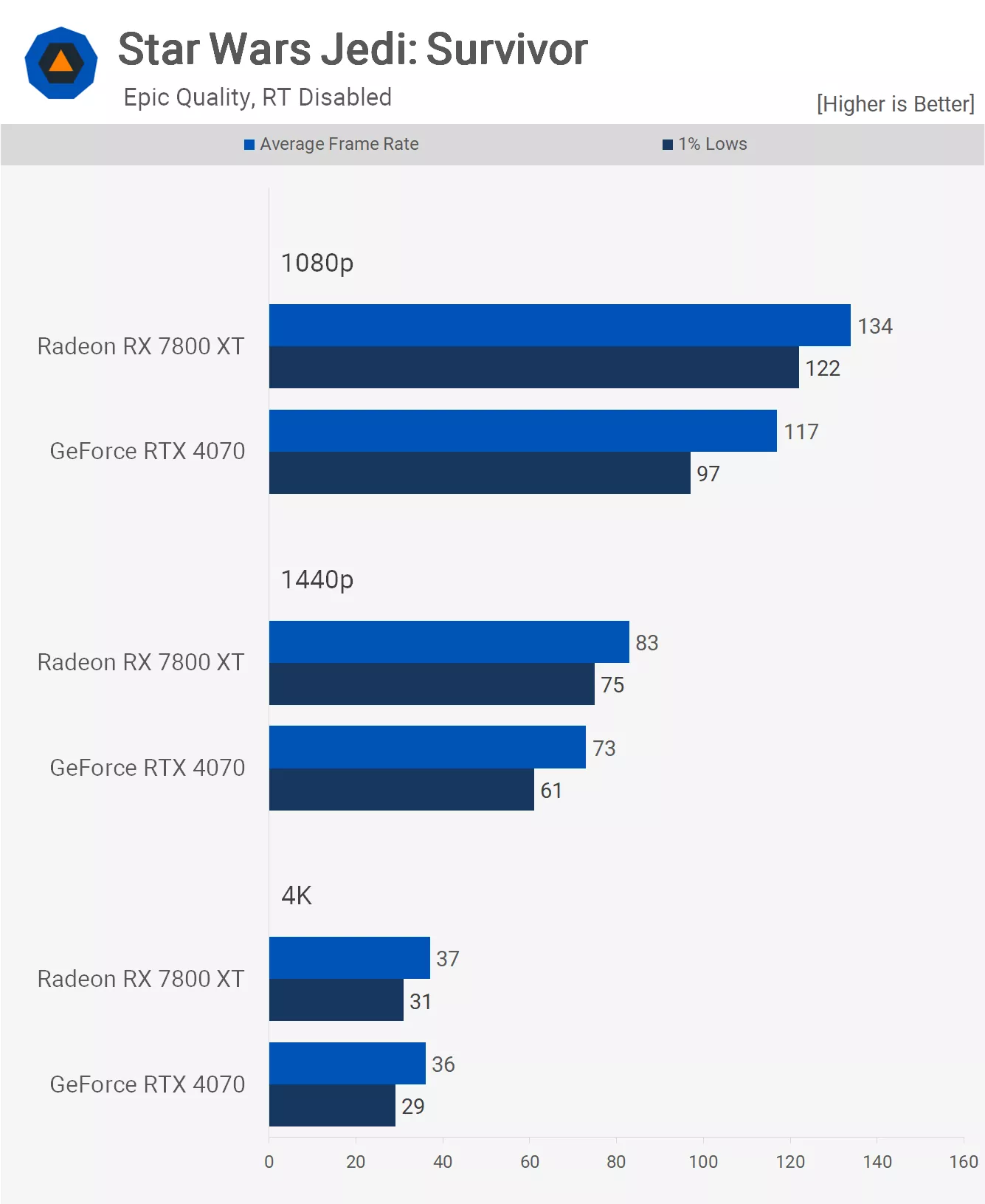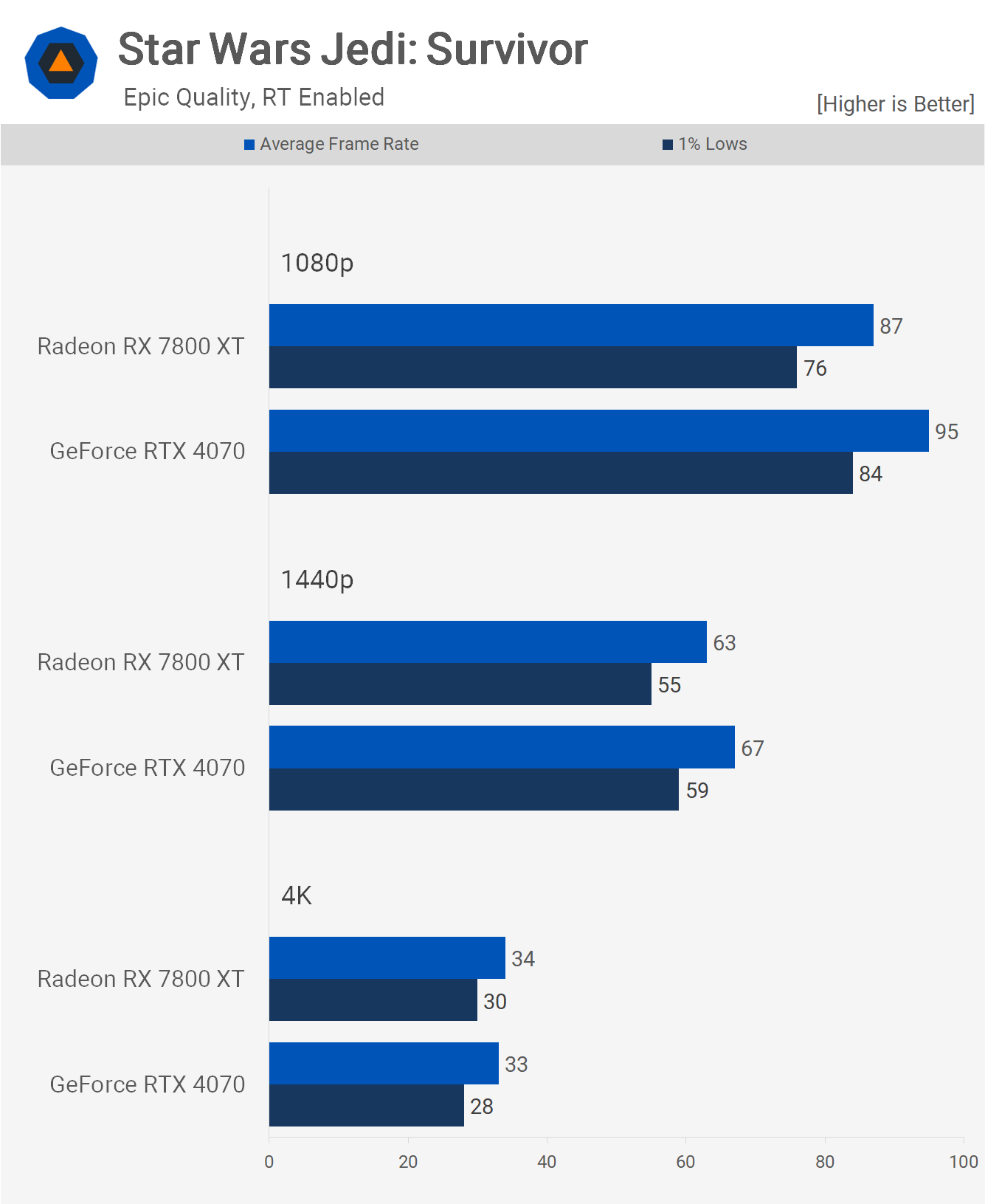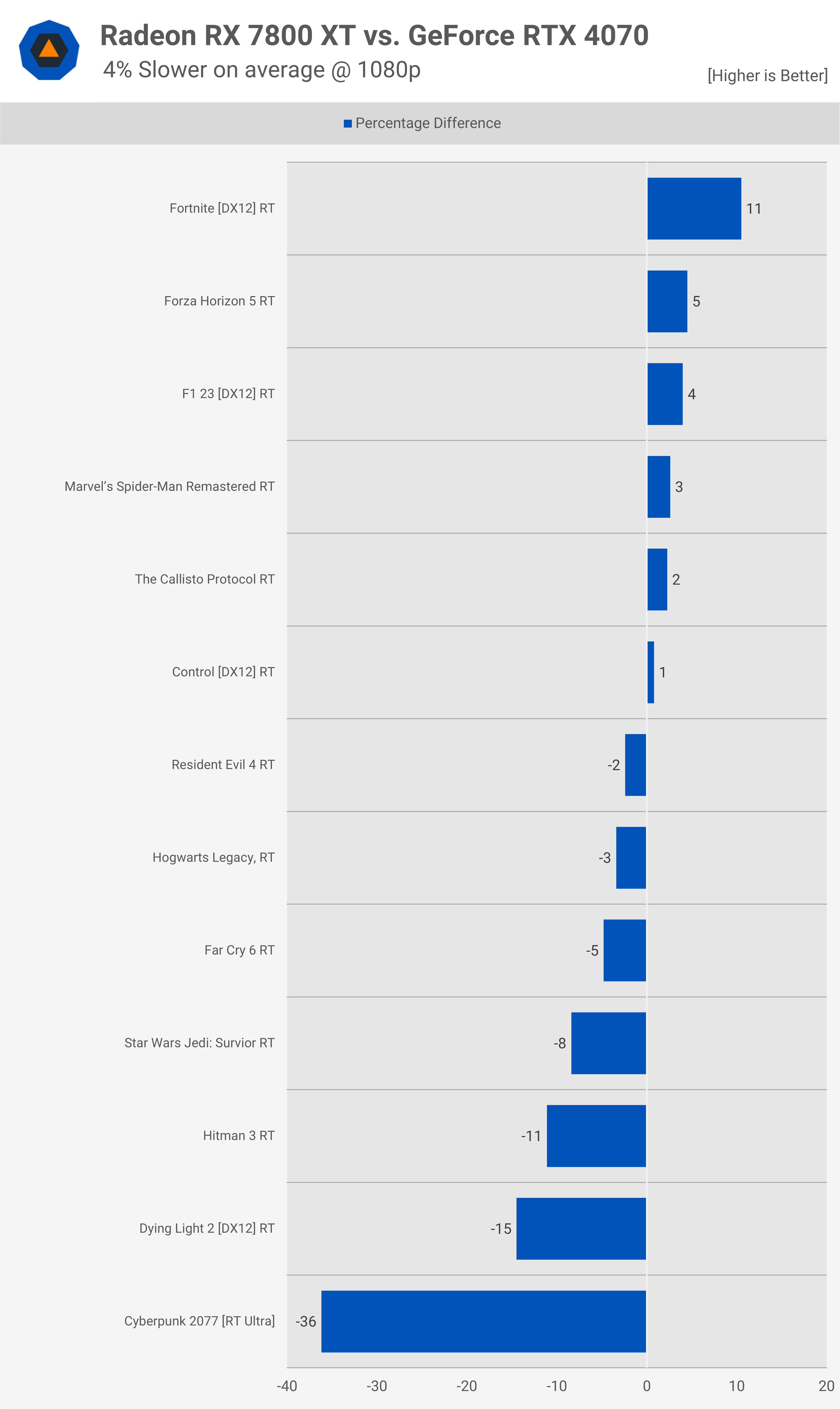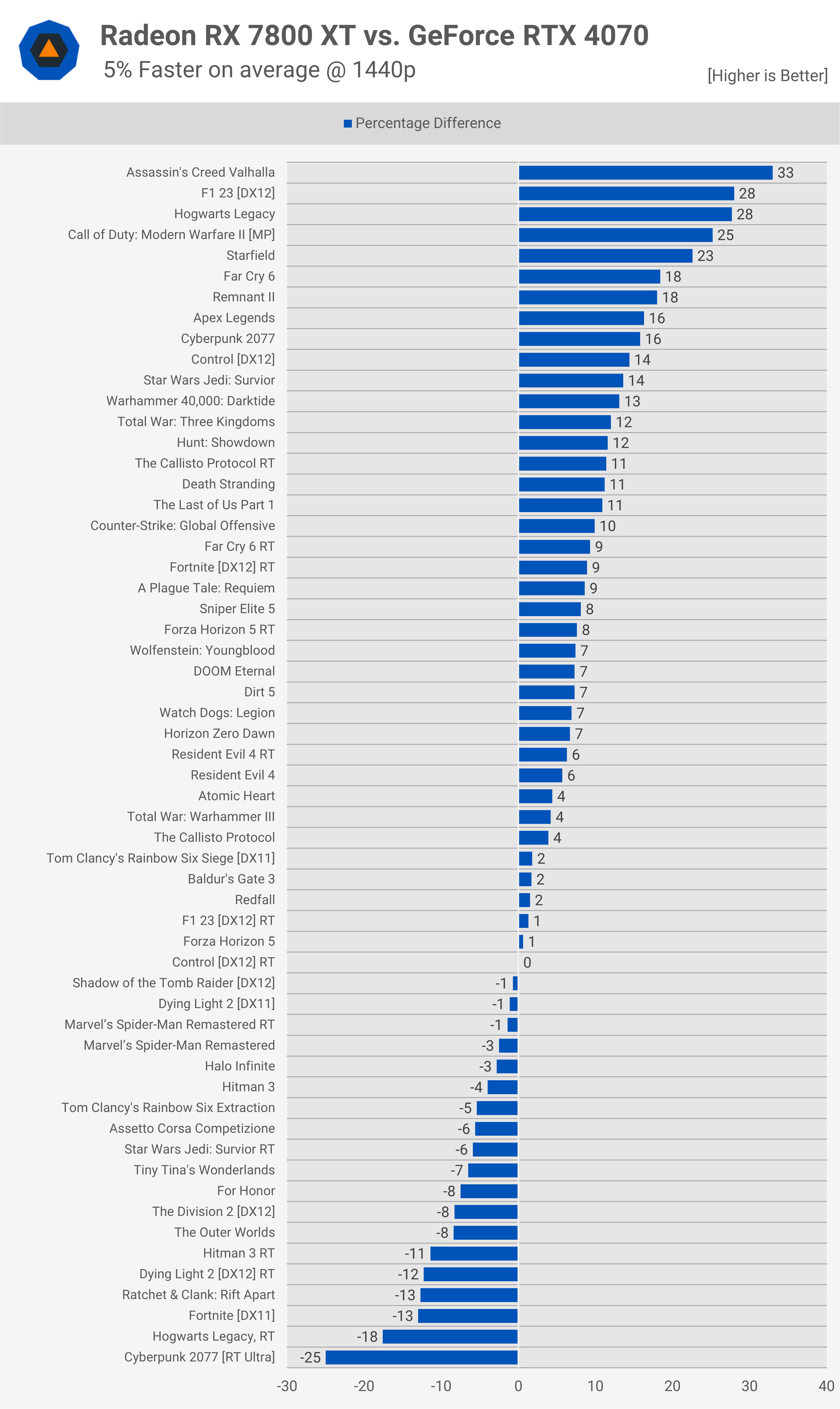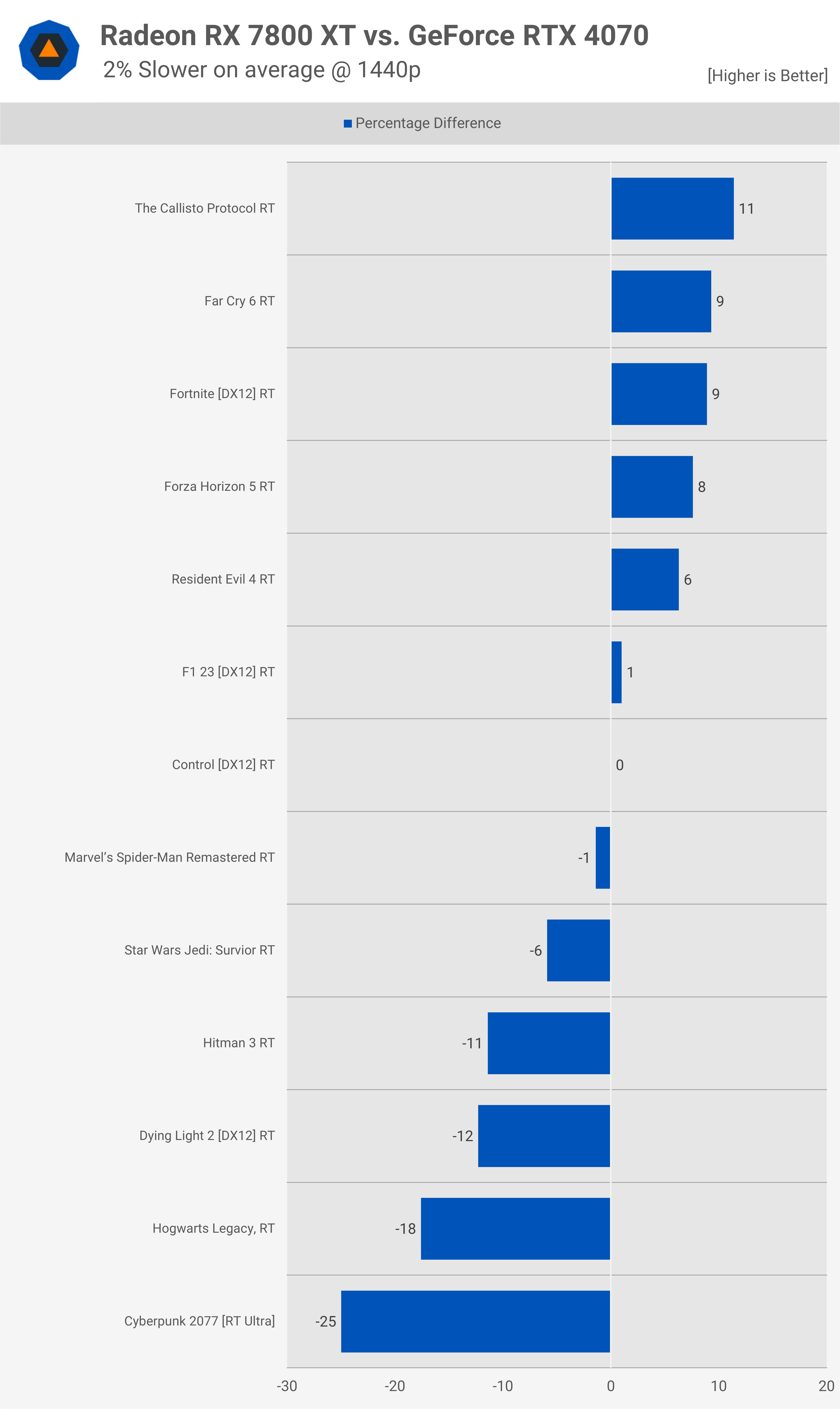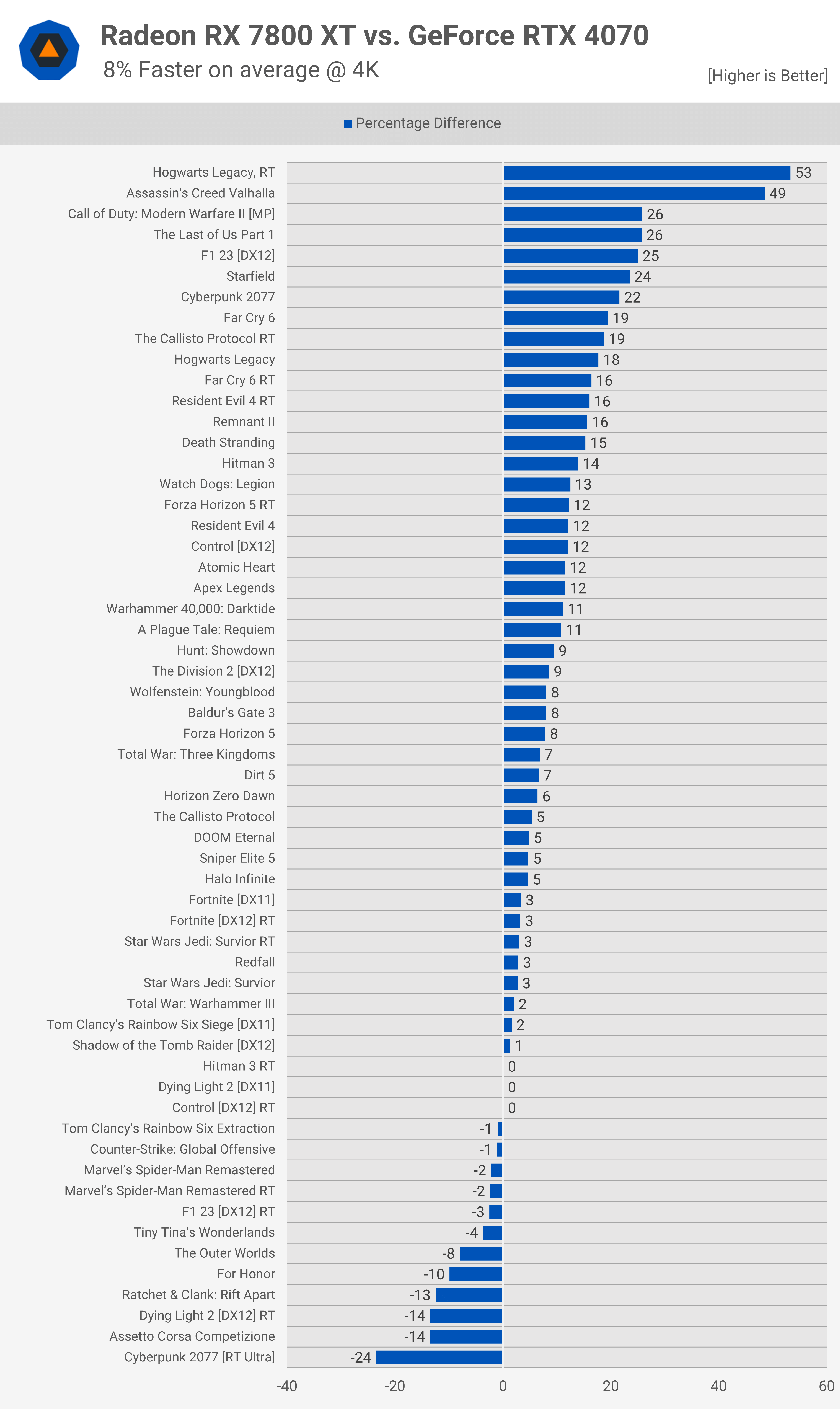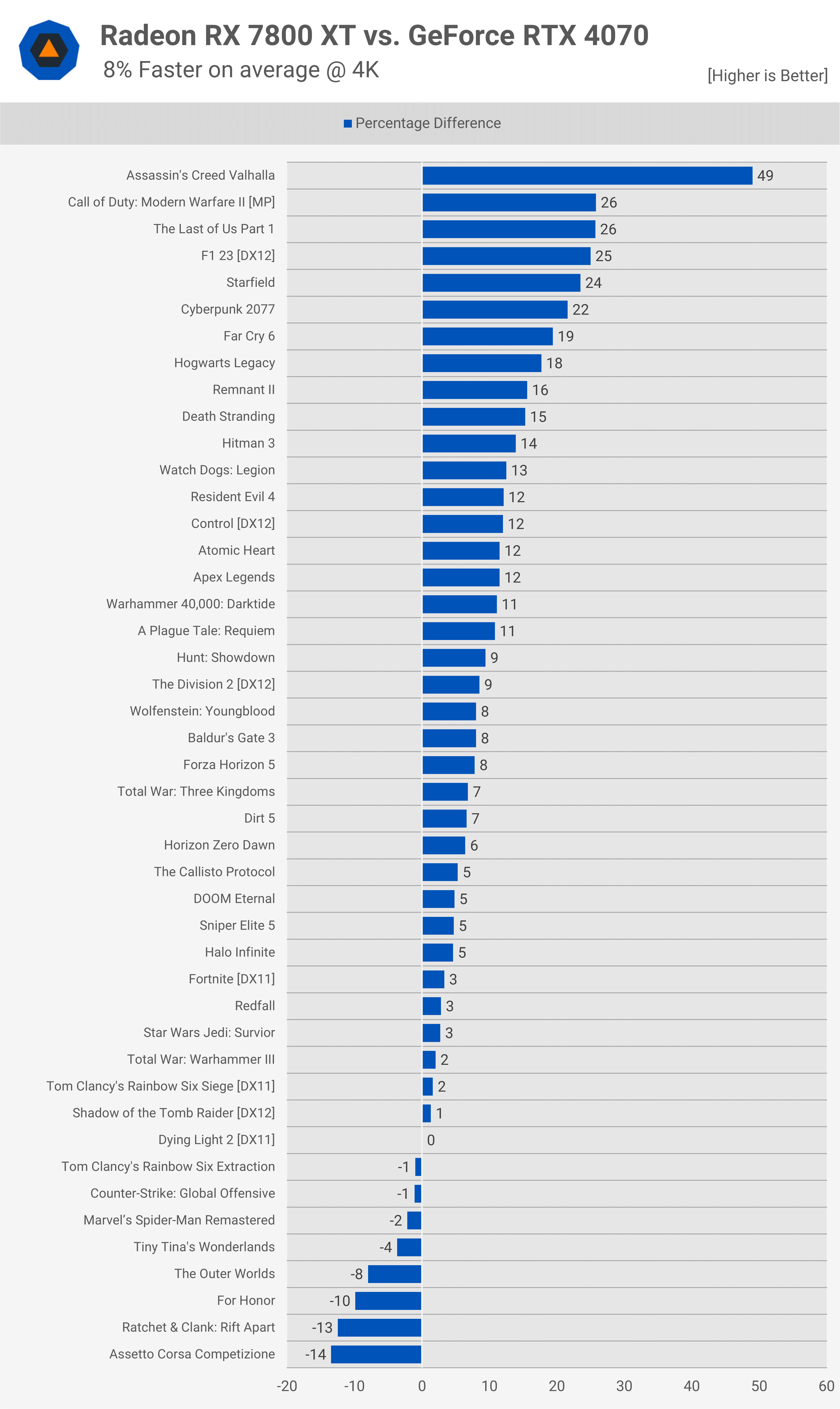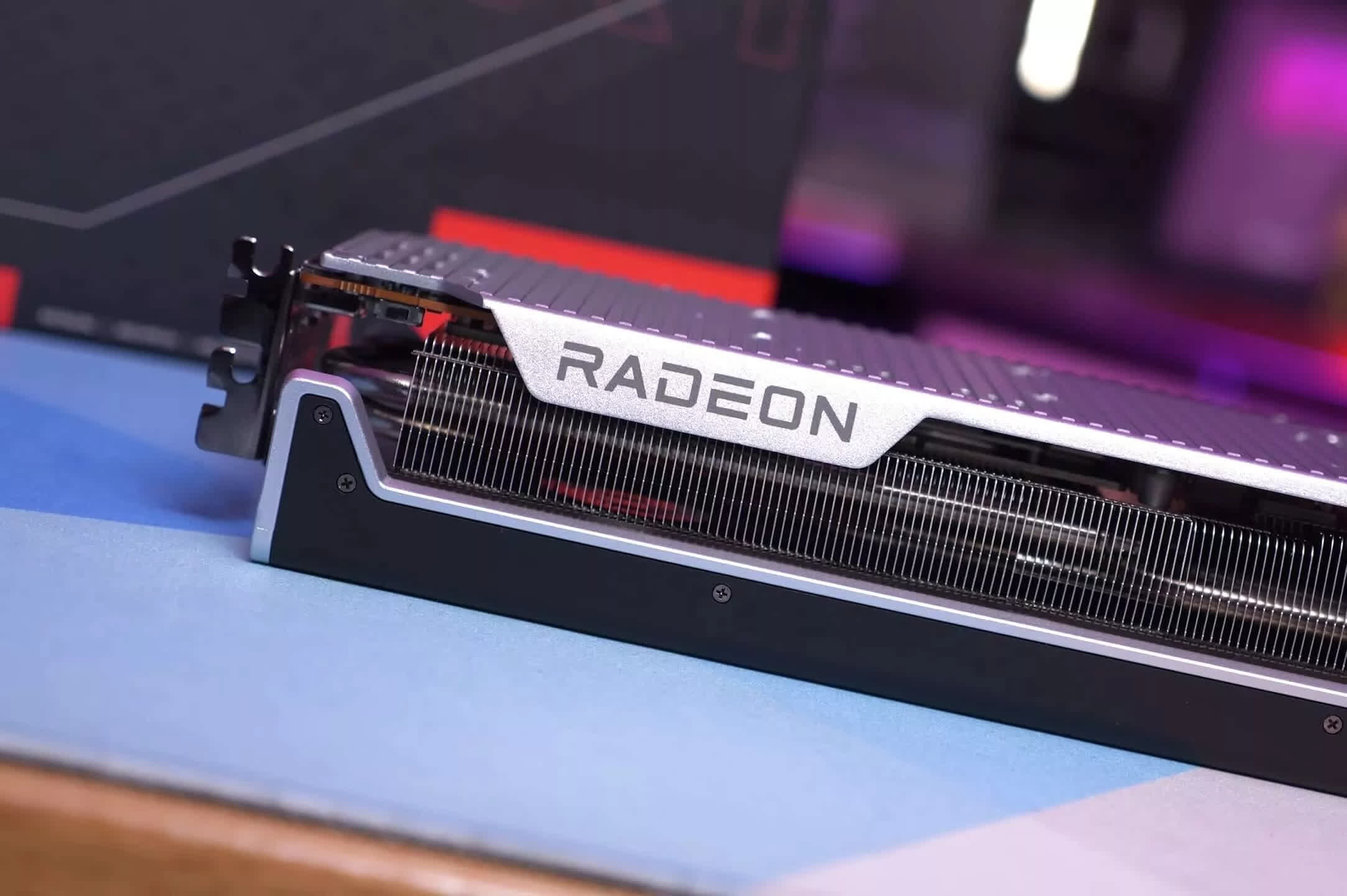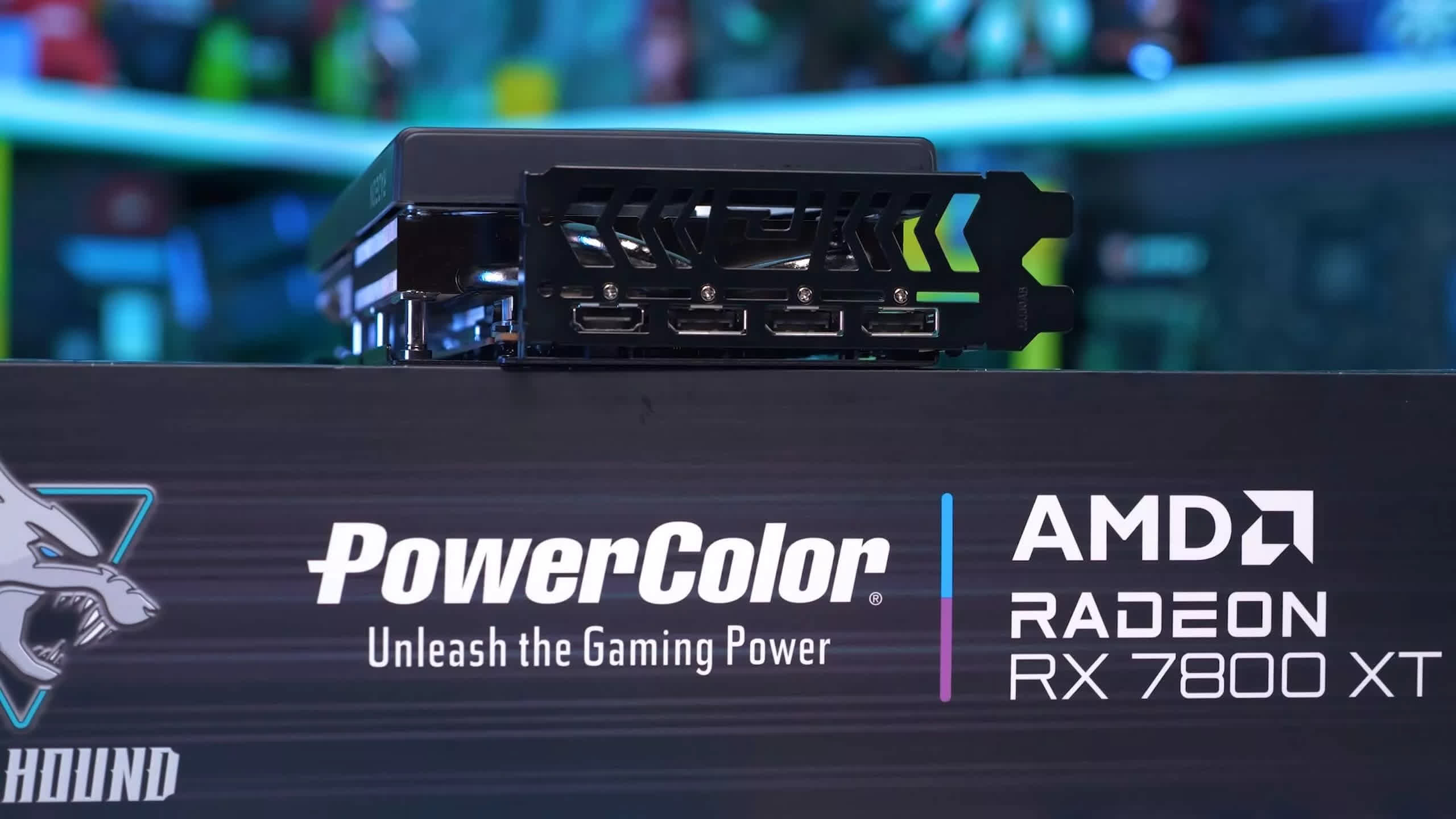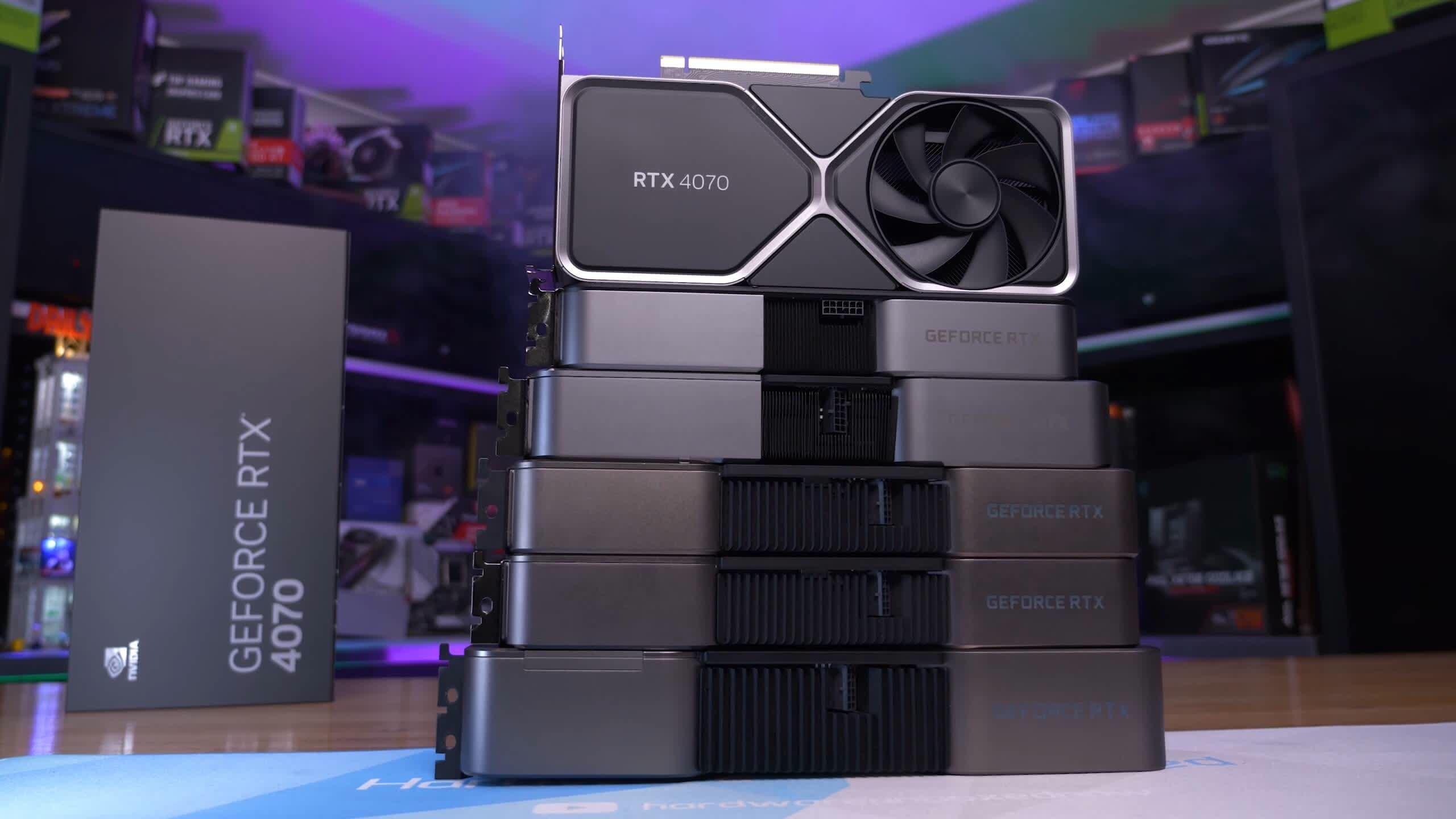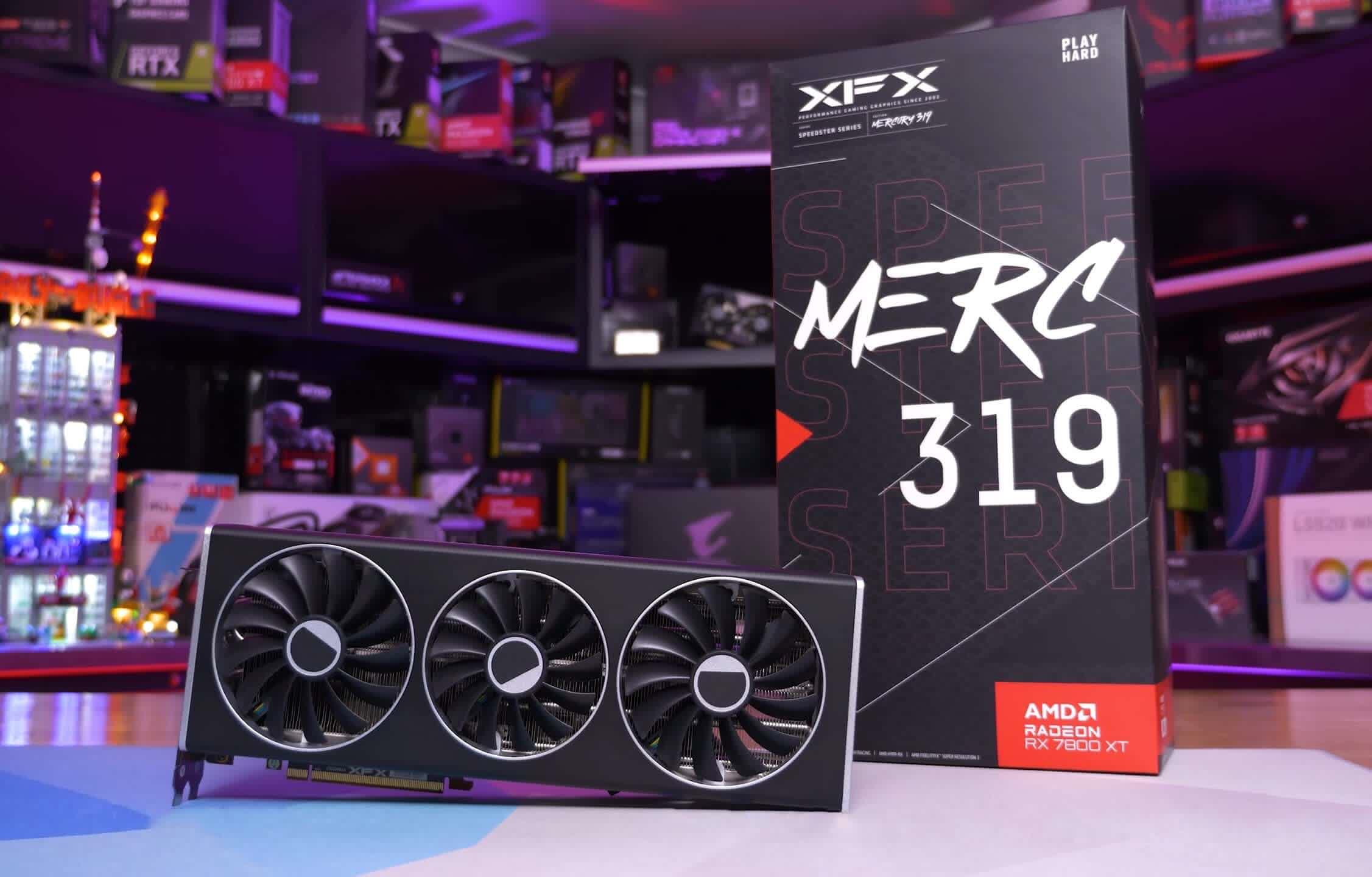A week ago, AMD launched the Radeon RX 7800 XT receiving its first reviews and we found it to offer great value at $500. It certainly brought strong competition to the more expensive GeForce RTX 4070, however for our day-one review we only managed to test 15 games.
Today's review will go much more in-depth with a 45 game sample, showcasing a massive head-to-head comparison between the $600 GeForce RTX 4070 and the $500 Radeon RX 7800 XT. Without further ado, let's review the test system specs and dive in.
For testing we've used a machine powered by the Ryzen 7 7800X3D paired with a Gigabyte X670E Aorus Master motherboard and 32GB of DDR5-6000 CL30 memory. We'll review the data for approximately a dozen titles before presenting the comprehensive breakdown graphs.
The resolutions of interest include 1080p, 1440p, and 4K. In total, we've tested 56 configurations. All the data is freshly updated for this review, so let's get started...
Benchmarks
We'll begin with Starfield, an AMD sponsored title known for its subpar optimization and inexplicably poor performance on GeForce GPUs. Did we mention it's an AMD-sponsored title? Regardless, we're evaluating 45 games in total. So, an occasional sponsored title isn't going to skew the results. You can rest assured, we've included plenty of Nvidia-sponsored titles as well.
At 1080p, the 7800 XT was 22% faster, 23% faster at 1440p, and 24% faster at 4K. This shows a clear victory for the Radeon GPU, especially at the lower resolutions.
Baldur's Gate 3, a newly released mega title sponsored by Nvidia, runs surprisingly well on AMD hardware despite that. The overall performance is is very good as long as you're equipped with a snappy CPU. At 1080p, we observed a high refresh rate experience (over 150 fps) while testing in the Baldur's Gate city. Performance at 1440p is largely consistent, and it's only when we switch to 4K that the 7800 XT pulls ahead by an 8% margin.
Next, we delve into Ratchet & Clank: Rift Apart. This game performs best on the GeForce GPU, with the RTX 4070 outperforming by 13-15% across resolutions. This difference is especially notable at 4K where an increase from 49 fps to 56 fps significantly boosts the performance.
Moving on to Cyberpunk 2077, the 7800 XT clocked 142 fps at 1080p using the high-quality preset, making it 9% faster than the RTX 4070. This difference expands to 16% at 1440p and then 22% at 4K. Do note, upscaling support is essential at 4K.
With ray tracing enabled in Cyberpunk, the Radeon 7800 XT faces performance issues, mostly that of a shockingly low frame rate. At 1080p, we recorded a mere 37 fps, making the RTX 4070 a staggering 57% faster at 58 fps. While upscaling would be essential here, anticipate the uplift to be consistent across both GPUs, given FSR and DLSS scale evenly in this game.
The results for The Callisto Protocol are neck and neck. The 7800 XT has a slight edge, leading by 4% at 1080p and 1440p, and 5% at 4K. Both GPUs showcased stellar performance in this game.
The ray tracing performance in this title was surprisingly competitive. At 1080p and 1440p, the 7800 XT led by 2% and 11%, respectively. At 4K, the Radeon GPU boasted a considerable 19% victory, even though the performance wasn't particularly impressive.
Shifting to Fortnite, this is a game you'd typically want to play using the DirectX 11 API due to superior performance and smoother frame times, which are crucial for competitive gameplay. For this reason, the 'performance mode' preferred by all pro Fortnite players is based on the DX11 mode.
Unfortunately, AMD's DX11 performance in Fortnite has historically been lackluster, resulting in the RTX 4070 outpacing by 26% at 1080p and 15% at 1440p. However, at 4K, the Radeon 7800 XT sneaks ahead by a slim 3% margin due to the 4070's memory bandwidth limitations.
If you prefer playing Fortnite with ray tracing, you'll need to use DX12. Here, the Radeon GPU shows a marked improvement relative to its GeForce counterpart. The 7800 XT was 11% faster at 1080p and 9% at 1440p, while both GPUs delivered nearly identical performance at 4K.
Resident Evil 4 runs very well on both AMD and Nvidia hardware and using the second highest quality preset both GPUs pumped out over 170 fps at 1080p. The 7800 XT was then just 6% faster at 1440p and 12% faster at 4K.
Now using the maximum quality preset which enables ray tracing we find almost identical performance at 1080p, though the 7800 XT did pull ahead at 1440p by a 6% margin and then 16% at 4K which did lead to a noticeable improvement.
Spider-Man Remastered has proven to be a well-optimized title. Here, we see excellent performance from both GPUs. With over 200 fps rendered at 1080p, the RTX 4070 was just 4% faster, and we observed very similar performance at 1440p and 4K.
Even with ray tracing enabled, the overall performance is competitive between these two GPUs. We are CPU-limited at 1080p, but this isn't the case at 1440p and 4K, where performance was virtually identical.
Hogwarts Legacy is one of the more demanding games released this year. Nonetheless, the 7800 XT performs impressively, delivering 20% more performance than the RTX 4070 at 1080p and an impressive 28% more at 1440p. The margins begin to narrow at 4K, though an 18% increase is still notable.
The ray tracing results vary significantly. At 1080p, we are CPU-limited, falling just shy of 60 fps. However, we noted better 1% lows with the RTX 4070. At 1440p, we see the true ray tracing performance of these GPUs, and the RTX 4070 is 21% faster.
But when reaching 4K resolution, the RTX 4070's performance plummets due to VRAM limitations. Nevertheless, even with ample VRAM, the performance on the 7800 XT is far from ideal.
The last game we'll examine in detail is Star Wars Jedi: Survivor. With epic settings enabled, the Radeon 7800 XT was 15% faster at 1080p and 14% at 1440p, with both GPUs delivering identical performance at 4K.
However, when enabling ray tracing, the RTX 4070 takes the lead, delivering 9% more performance at 1080p and 6% more at 1440p. Both GPUs struggled at 4K, with the GeForce GPUs facing memory bandwidth limitations. Consequently, neither GPU could significantly outperform the other, with both settling at around 30 fps.
Performance Summary
We've just reviewed nearly a dozen of the 45 games tested, some with and without RT enabled. Now, it's time to see how these two GPUs compare across all the games tested.
Let's check out the 1080p data first...
We analyzed all 56 configurations tested at 1080p. The performance between these two GPUs is quite similar. The Radeon 7800 XT is on average just 3% faster. While there were instances where the Radeon GPU outpaces its counterpart by a margin of 20% or more, there were also cases where it lags by 20% or more.
Excluding the ray tracing data, the Radeon 7800 XT is 5% faster on average. Although there are numerous instances where the Radeon GPU is notably faster, the majority of games show marginal differences between the two.
Interestingly, ray tracing results in the 13 games tested paints a similar picture. The main setback for the Radeon 7800 XT is in Cyberpunk 2077, causing a 4% overall loss. Nevertheless, there are victories for the Radeon GPU on the RT front.
At 1440p, the 7800 XT's lead increases slightly to 5% on average, mirroring the mixed workload 1080p data. Once again, there's no clear victor.
When we exclude ray tracing data, the Radeon 7800 XT pulls ahead by 7% on average. The chart indicates that the Radeon GPU generally offers better rasterization performance, with standout gains in specific cases.
The ray tracing comparisons remain tight between the GPUs. While the 7800 XT struggles in Cyberpunk 2077, it excels in games like Hogwarts Legacy, Dying Light 2, and Hitman 3. Conversely, it performs well in titles such as Resident Evil 4, Forza Horizon 5, Fortnite, and Far Cry 6.
At 4K, the Radeon 7800 XT achieves its largest lead yet over the GeForce RTX 4070 at 8%, boosted by significant victories in Hogwarts Legacy (with ray tracing) and Assassin's Creed Valhalla. Without these outliers, the 7800 XT's lead shrinks to 6%, making the competition almost a tie.
Without ray tracing, the 7800 XT maintains its 8% average lead. Notably, Assassin's Creed Valhalla posed a challenge for the RTX 4070 at 4K. The Radeon GPU seldom trailed by a 10% margin and frequently led by over 10%.
Lastly, examining the 4K ray tracing data – many results are less relevant due to low frame rates. A notable win for the 7800 XT occurred in Hogwarts Legacy. Excluding that, the 7800 XT had only a 2% average lead.
The Radeon's most significant loss occurred in Cyberpunk 2077, where the GeForce GPU barely reached 17 fps. Thus, much of the 4K RT data can be seen as inconclusive but for those still interested, that's comparison between the GPUs at those settings.
And the Winner is...
In terms of performance, the Radeon 7800 XT and GeForce RTX 4070 are generally evenly matched. However, which GPU is ultimately faster will vary based on the games you play, in which instance one could be quite a bit better than the other.
In other words, it's worth researching performance for the titles you're most interested in and here's a good sample of 45 popular PC games to provide some of that guidance. More often than not, the 7800 XT outperforms when it comes to rasterization, while the RTX 4070 excels in ray tracing.
The primary advantage of the GeForce GPU includes DLSS support and Frame Generation, at least for certain single player titles. We're well aware of AMD's FSR 3 launch, but for now we can't be certain about its effectiveness or if it will directly compete with DLSS 3.
The GeForce RTX 4070 is also more power efficient. Although the difference isn't massive, our tests show that it can save around 50 watts for similar performance.
On the other hand, the Radeon 7800 XT's main advantage lies in its additional 4GB of VRAM, offering a 16GB buffer, and generally faster rasterization performance. But as we've observed across titles, that difference can sometimes be marginal.
Then there's pricing and right now the US MSRP is heavily in AMD's favor. The Radeon 7800 XT is $100 more affordable, a comfortable position that translates to a significant 17% discount. This makes the Radeon GPU the obvious choice in our opinion as it offers a lot more value.
However, this might not hold true universally. Outside of the US, the Radeon's pricing can be less competitive. For example, in Australia you can easily purchase an RTX 4070 for $890 AUD, whereas the most affordable 7800 XT costs just $10 less at $880 AUD. So, the 7800 XT and RTX 4070 occupy the same price point in Australia and this is true for many other regions we checked.
In the US, we found five RTX 4070 models priced at $600 on Newegg (US MSRP), but only one 7800 XT model priced at $500. Three other 7800 XT models are listed but out of stock and the majority of 7800 XT's hover between $520 and $540. Given that the Radeon 7800 XT was just recently released, while the RTX 4070 has been available for five months, we expect the pricing and availability of the 7800 XT to improve in the coming weeks and months.
To be a more attractive purchase outside the US, the Radeon 7800 XT should be priced at least 10% lower than the RTX 4070. It's disappointing to see the 7800 XT offering great value in the US but not as much in most other regions. We hope this is just an early availability issue and pricing will correct shortly.
It's worth mentioning, we also encountered stability issues with the Radeon 7800 XT, with frequent crashes in F1 23 using the high preset, which is odd as "ultra high" seemed to work fine.
Cyberpunk 2077 also proved unstable, especially with ray tracing. It's challenging to determine whether this was an isolated issue or related to the current driver. We did spend several hours trying to solve the issue without success, and interestingly the Radeon 7900 XT didn't exhibit these stability concerns, leading us to believe that the issue might be linked to the 7800 XT's initial driver release.
Bottom line, the Radeon 7800 XT at $500 is the clear winner for those in the US, offering significant savings and top notch performance at this tier. However, if pricing in your region looks more like it does in Australia, you could go either way and stuff like DLSS and better power efficiency could make a strong case for the RTX 4070. But of course, let us know which GPU you think is the better buy in the comments below.
Shopping Shortcuts:
- AMD Radeon RX 7800 XT on Amazon
- Nvidia GeForce RTX 4070 on Amazon
- AMD Radeon RX 7700 XT on Amazon
- AMD Radeon RX 7900 XT on Amazon
- Nvidia GeForce RTX 4070 Ti on Amazon
- Nvidia GeForce RTX 4060 Ti on Amazon
- AMD Radeon RX 7600 on Amazon
- Nvidia GeForce RTX 4080 on Amazon
- AMD Radeon RX 7900 XTX on Amazon
Further Testing
We have additional benchmarks and comparisons you may be interested in around these two GPUs:
